21.09.2024
SpaceX fires up 6th Starship to prep for test flight
The vehicle's liftoff is likely still months away.
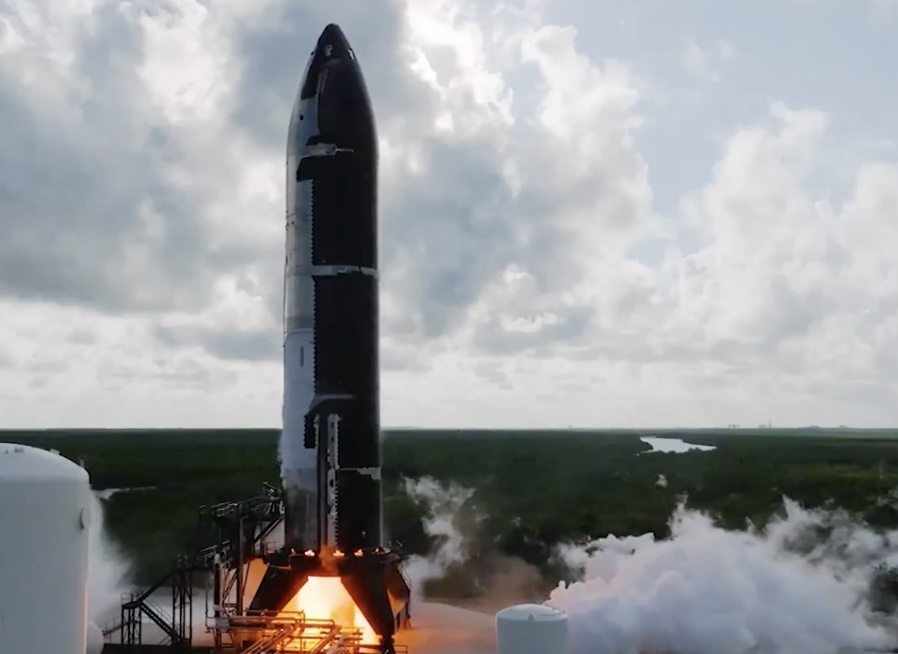
SpaceX just fired up another Starship vehicle, to prep for a test flight that's likely several months away.
The company performed a "static fire" on Wednesday (Sept. 18) at its Starbase site in South Texas, briefly igniting the six Raptor engines of Ship 31, the upper stage of the vehicle that will conduct the sixth Starship test flight.
SpaceX posted a photo and two videos of the static fire — a common prelaunch engine test — via its X account on Wednesday night.
The newly tested vehicle probably won't get off the ground for a while. SpaceX still hasn't launched Starship's fifth flight; it's waiting for approval from the U.S. Federal Aviation Administration (FAA), which isn't expected until late November.
The FAA says that it and its partner agencies need more time to assess modifications SpaceX made to Starship's configuration and mission profile for Flight 5, as well as new information about the test's possible environmental impact. The company and its billionaire founder, Elon Musk, aren't happy about the delay.
"Flight 5 is built and ready to fly. Flight 6 will be ready to fly before Flight 5 even gets approved by FAA!" Musk said via X last night, in response to SpaceX's static-fire post.
And last week, SpaceX published a lengthy blog post, called "Starships Are Meant to Fly," that expressed frustration with the current Starship situation and the regulations governing the launch industry more generally.
SpaceX is developing Starship to help humanity settle the moon and Mars, as well as perform a variety of other spaceflight tasks. The fully reusable vehicle consists of two elements: a first-stage booster called Super Heavy and a 165-foot-tall (50 meters) upper stage, named Starship or simply Ship.
Starship has conducted four test flights to date, in April and November of 2023 and March and June of this year. The vehicle has performed better on each successive jaunt, and SpaceX declared the most recent mission a complete success.
Quelle: SC
----
Update: 22.09.2024
-
SpaceX practices for epic Starship booster catch attempt
The company gave the "chopstick" arms of its launch tower a workout recently to gear up for the big day.
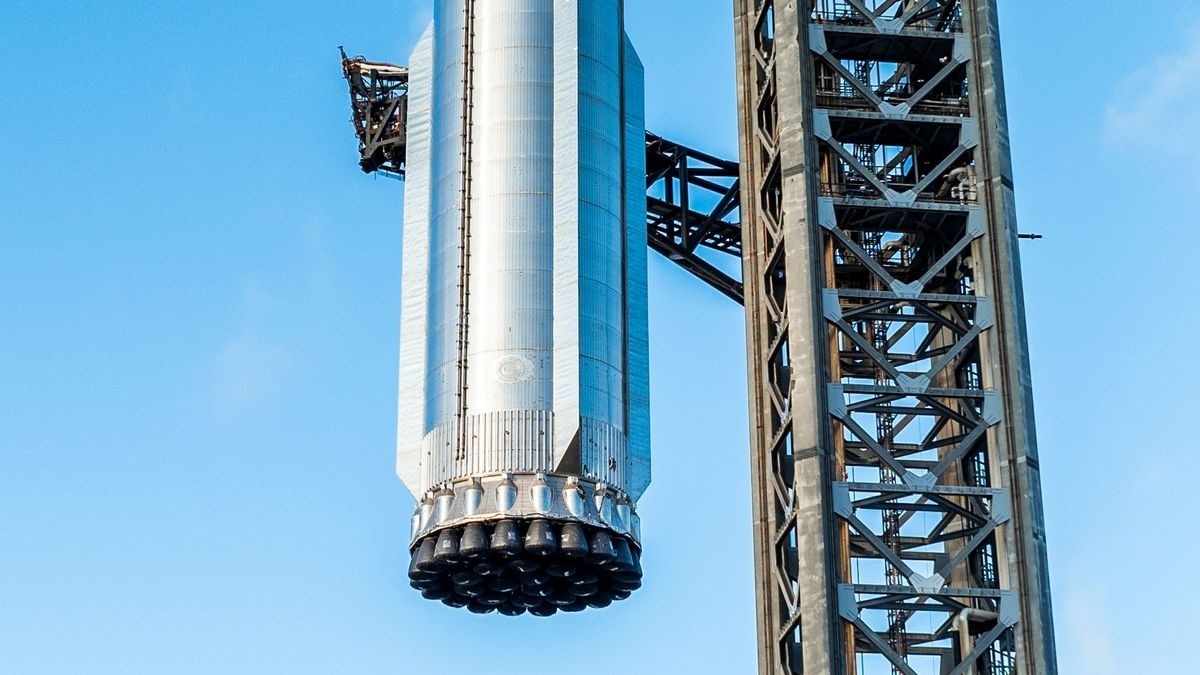
Closeup of Super Heavy's base during the recent lift operation, showing the booster's 33 Raptor engines. (Image credit: SpaceX
SpaceX is gearing up to make spaceflight history again.
During the next test flight of its Starship megarocket, SpaceX plans to catch the vehicle's huge first-stage booster, known as Super Heavy, using the "chopstick" arms of the launch tower at its Starbase site in South Texas.
SpaceX is known for its trailblazing achievements in rocket reuse, but this would be next-level. Landing a booster back on the launch mount — rather than on a ship at sea or on a designated touchdown pad on terra firma — would slash the time needed for inspection and refurbishment, enabling much more efficient reflight, SpaceX founder and CEO Elon Musk has said.
The chopstick arms were designed to lift Starship's two elements — Super Heavy and the 165-foot-tall (50 meters) upper stage, called Starship or simply "Ship" — onto the launch mount. SpaceX has been practicing with the arms recently in anticipation of expanding their role, as the company revealed today (Sept. 20) in a post on X.
"Starbase tower lifts the Super Heavy booster for Flight 5 to expected catch height," SpaceX wrote in the post, which shared four photos of the operation.
As that post notes, the upcoming liftoff will be the fifth for Starship, a 400-foot-tall (122 m) vehicle that SpaceX thinks will make Mars settlement and other ambitious exploration feats economically feasible.
Starship's four flights to date occurred in April and November of 2023 and March and June of this year.
The rocket has performed better on each successive liftoff. For example, the debut mission lasted just four minutes; SpaceX sent a detonation command after Starship's two stages failed to separate as planned and the vehicle began to tumble in the skies over South Texas.
But the most recent launch was a complete success, according to SpaceX. Super Heavy and Ship separated on time, and the latter reached orbital velocity as planned. Both stages returned to Earth intact, surviving their trips through the atmosphere and splashing down in the ocean (in two different parts of the world).
SpaceX says it has been ready to launch Starship's fifth test flight since early August, but the liftoff is likely still several months away. The U.S. Federal Aviation Administration (FAA) has said it needs more time to assess the potential environment impact of the launch, and to assess modifications SpaceX made to the Starship vehicle and flight plan after Flight 4. That review isn't expected to be done until late November.
SpaceX is not happy about the delay. Last week, it published a lengthy blog post criticizing the FAA's pace of operations and the regulatory environment for launch providers more generally.
Quelle: SC
----
Update: 9.10.2024
.
Starship's fifth flight test could launch as soon as October 13, pending regulatory approval.
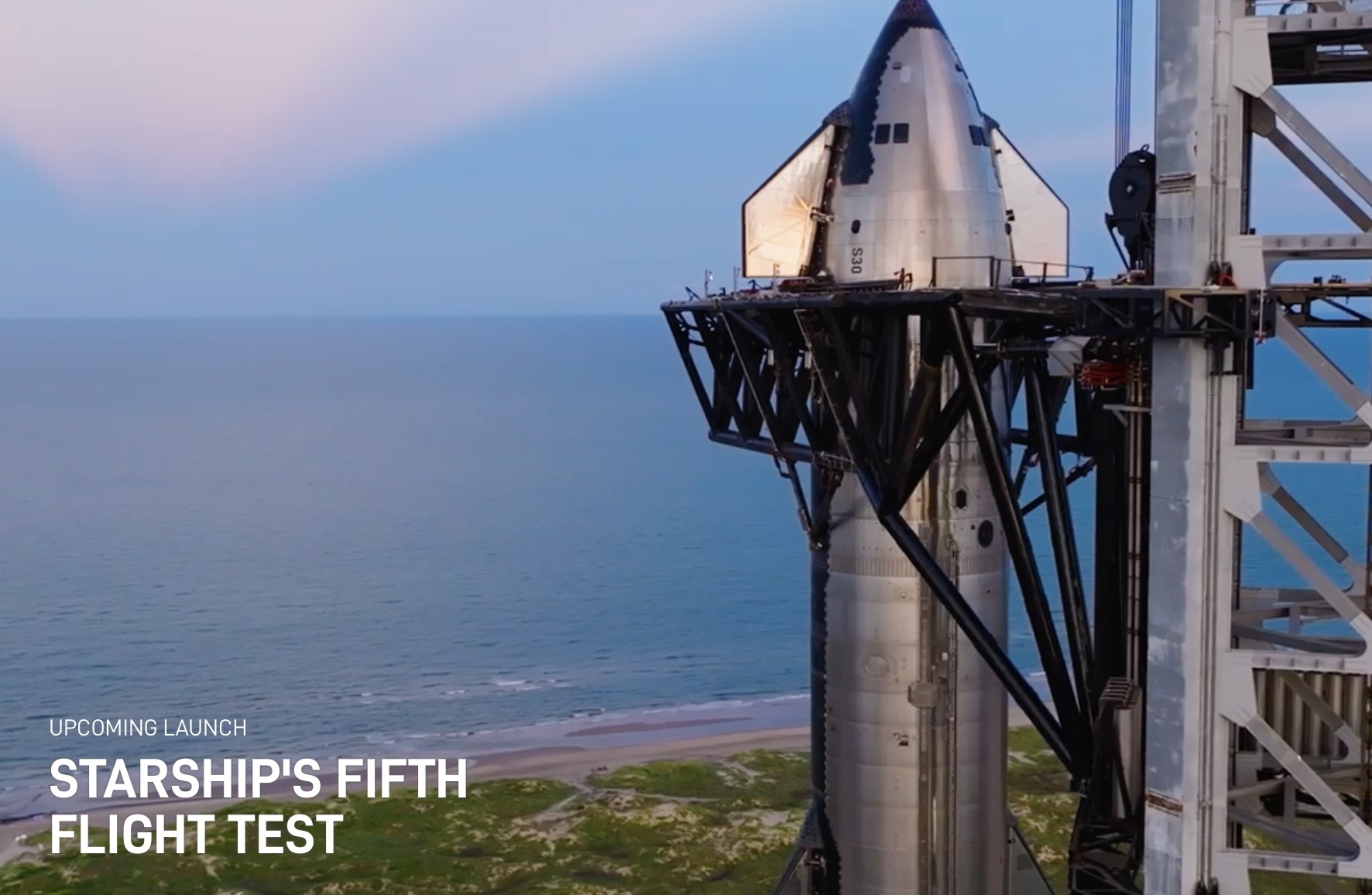
A live webcast of the flight test will begin about 30 minutes before liftoff, which you can watch here and on X @SpaceX. You can also watch the webcast on the new X TV app. The launch window will open as early as 7:00 a.m. CT. As is the case with all developmental testing, the schedule is dynamic and likely to change, so be sure to stay tuned to our X account for updates.
Flight 4 was a tremendous success. A fully successful ascent was followed by the first ever booster soft-landing in the Gulf of Mexico and Starship making it through a brilliant reentry, before its own landing burn and splashdown in the Indian Ocean.
The fifth flight test of Starship will aim to take another step towards full and rapid reusability. The primary objectives will be attempting the first ever return to launch site and catch of the Super Heavy booster and another Starship reentry and landing burn, aiming for an on-target splashdown of Starship in the Indian Ocean.
Extensive upgrades ahead of this flight test have been made to hardware and software across Super Heavy, Starship, and the launch and catch tower infrastructure at Starbase. SpaceX engineers have spent years preparing and months testing for the booster catch attempt, with technicians pouring tens of thousands of hours into building the infrastructure to maximize our chances for success. We accept no compromises when it comes to ensuring the safety of the public and our team, and the return will only be attempted if conditions are right.
Thousands of distinct vehicle and pad criteria must be met prior to a return and catch attempt of the Super Heavy booster, which will require healthy systems on the booster and tower and a manual command from the mission’s Flight Director. If this command is not sent prior to the completion of the boostback burn, or if automated health checks show unacceptable conditions with Super Heavy or the tower, the booster will default to a trajectory that takes it to a landing burn and soft splashdown in the Gulf of Mexico.
The returning booster will slow down from supersonic speeds, resulting in audible sonic booms in the area around the landing zone. Generally, the only impact to those in the surrounding area of a sonic boom is the brief thunder-like noise with variables like weather and distance from the return site determining the magnitude experienced by observers.
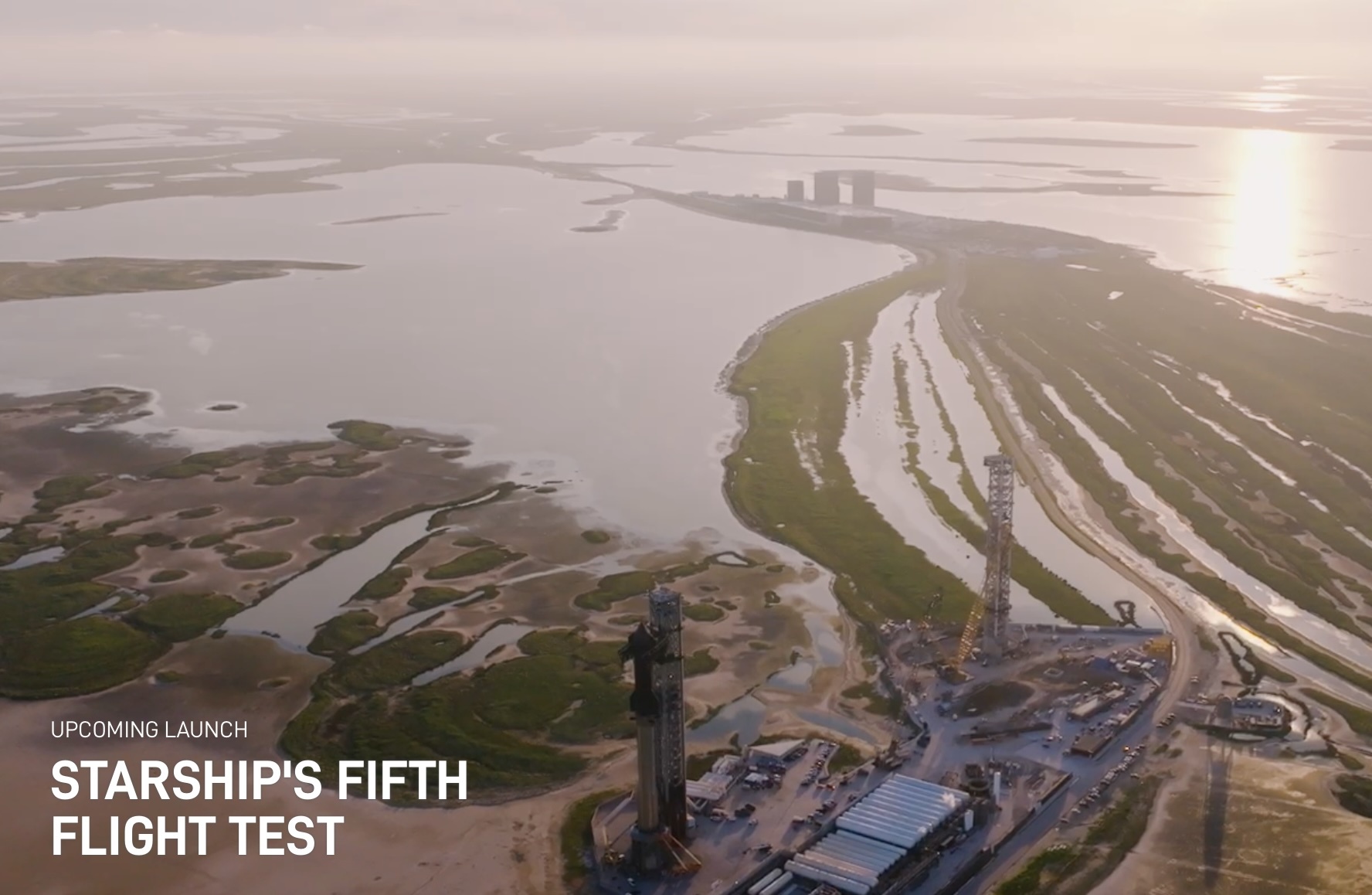
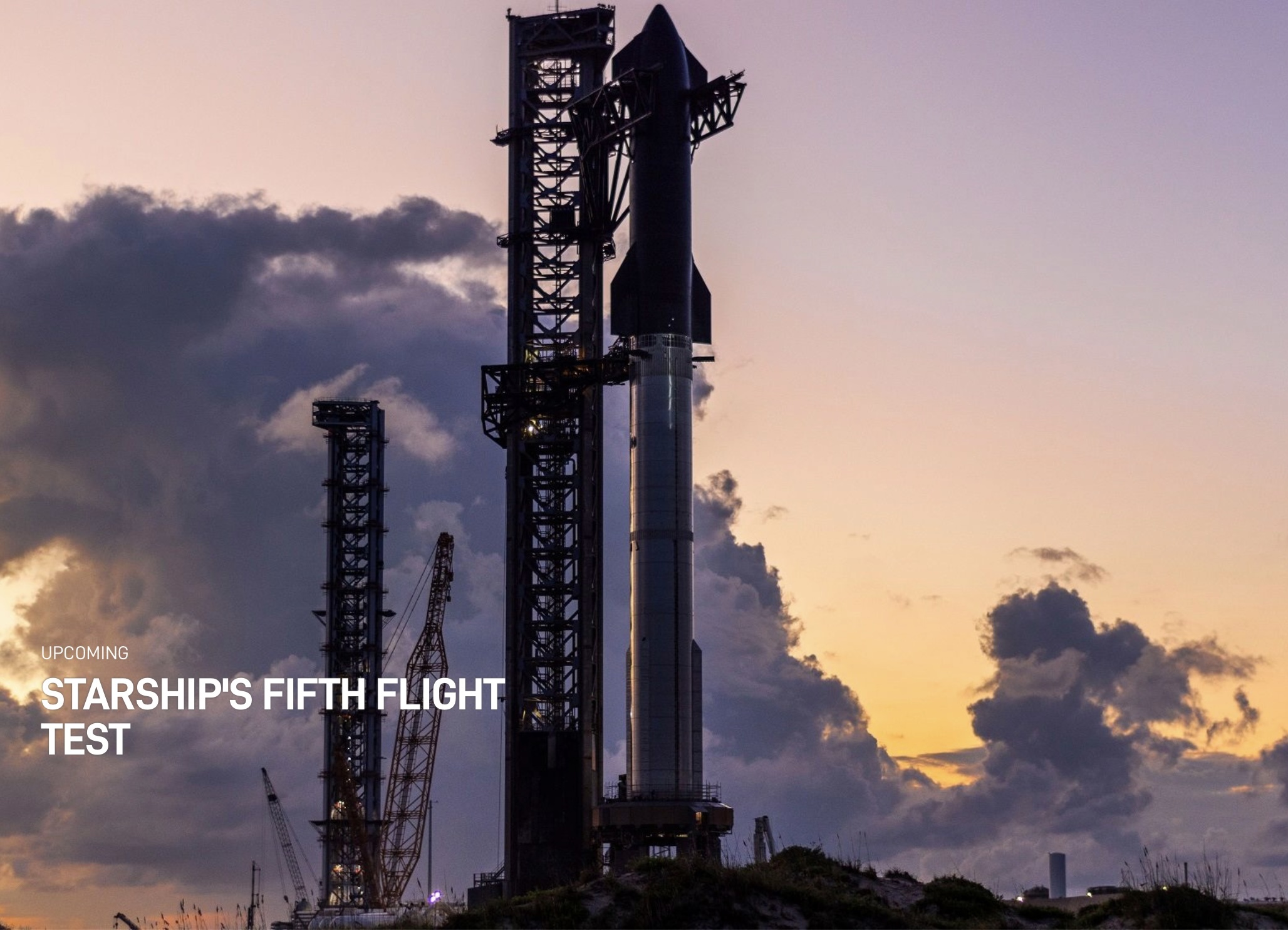
Starship will fly a similar trajectory as the previous flight test with splashdown targeted in the Indian Ocean. This flight path does not require a deorbit burn for reentry, maximizing public safety while still providing the opportunity to meet our primary objective of a controlled reentry and soft water landing of Starship.
One of the key upgrades on Starship ahead of flight was a complete rework of its heatshield, with SpaceX technicians spending more than 12,000 hours replacing the entire thermal protection system with newer-generation tiles, a backup ablative layer, and additional protections between the flap structures. This massive effort, along with updates to the ship’s operations and software for reentry and landing burn, will look to improve upon the previous flight and bring Starship to a soft splashdown at the target area in the Indian Ocean.
With each flight building on the learnings from the last, testing improvements in hardware and operations across every facet of Starship, we’re on the verge of demonstrating techniques fundamental to Starship’s fully and rapidly reusable design. By continuing to push our hardware in a flight environment, and doing so as safely and frequently as possible, we’ll rapidly bring Starship online and revolutionize humanity’s ability to access space.
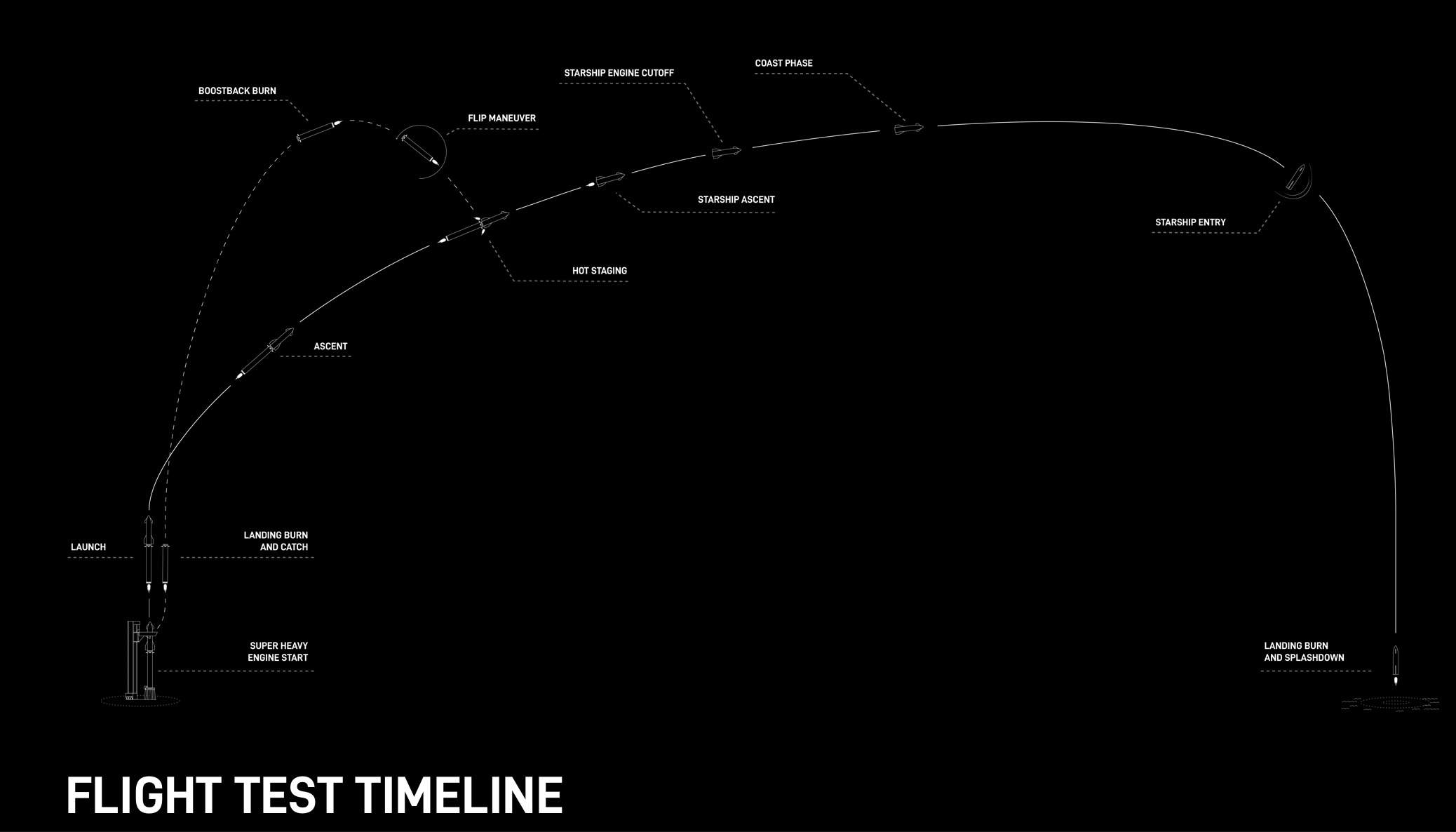

Quelle: SpaceX
----
Update: 10.10.2024
.
SpaceX says its next Starship launch could fly as early as Oct. 13, pending FAA approval
SpaceX appears to be trying to force the FAA's hand.
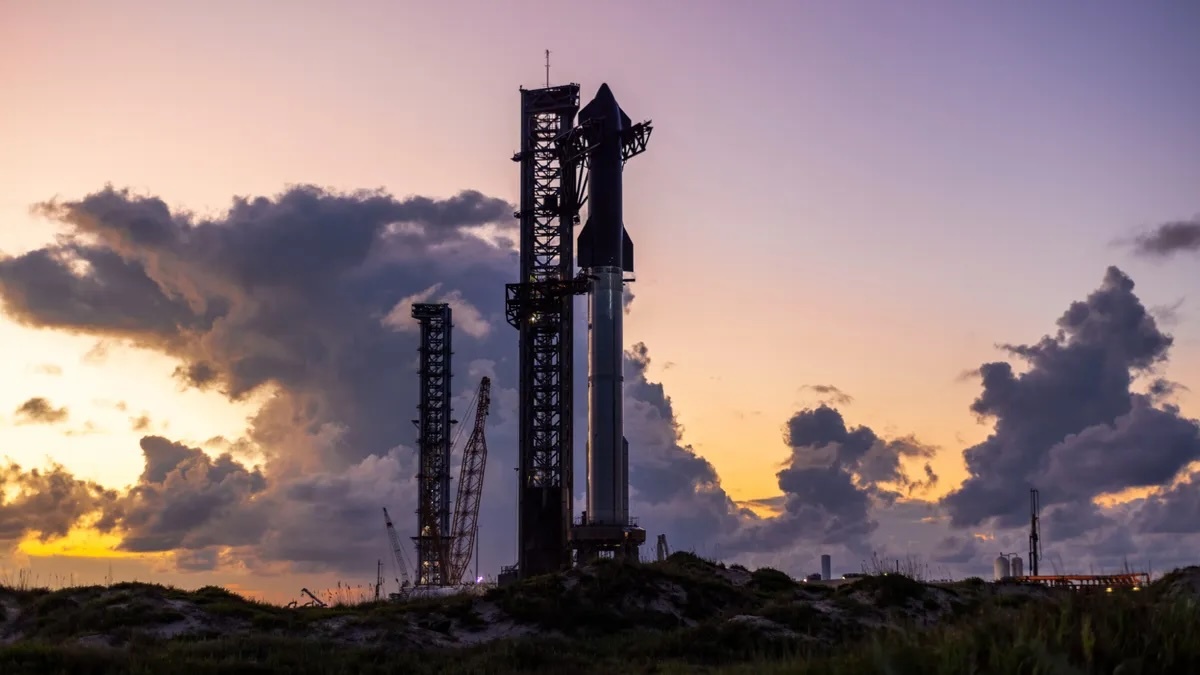
SpaceX stacks its fifth Starship vehicle in South Texas ahead of a planned test flight. (Image credit: SpaceX)
SpaceX is preparing to launch the fifth flight of its Starship megarocket as soon as Oct. 13, despite repeated statements from the Federal Aviation Administration (FAA) that the flight test would likely have to wait until November.
Starship last flew in June, and SpaceX nailed its launch objectives by returning the rocket to Earth as well as soft landing both Starship and its Super Heavy first-stage booster at sea. Now, SpaceX wants to attempt the first-ever return of Super Heavy to the launch pad — complete with a mid-air booster catch conducted by the launch tower's "chopstick" arms.
"Starship's fifth flight test is preparing to launch as soon as October 13, pending regulatory approval," SpaceX wrote in a post on X, formerly Twitter, on Monday evening (Oct. 7). "Pending regulatory approval" is a big caveat here, considering the FAA's estimation that Starship's fifth integrated flight test (IFT-5) wouldn't be cleared "before late November 2024." However, this hasn't stopped SpaceX from barreling toward Starship's next flight as fast as it can.
During the lead-up to last night's Oct. 13 target date announcement, SpaceX had been busy completing prep work on the IFT-5 Starship. Operators had been attending to tasks such as stacking the vehicle, performing propellant load tests and other preflight checkouts over the last month.
In light of the FAA's resistance to SpaceX's preferred timeline, the company has also been applying public pressure to the government agency. In a lengthy poston SpaceX's website, titled "Starships Are Meant to Fly," SpaceX claims the FAA's November timeline is "driven by superfluous environmental analysis," and disputes the FAA's assertion that SpaceX did not operate under the appropriate permits. "At no time did SpaceX operate the deflector without a permit," the update says, adding "[the Environmental Protection Agency] has agreed that nothing about the operation...needs to change."
NASA, too, is eager to see SpaceX complete the development of Starship, a vehicle the space agency has contracted to land astronauts on the moon as a part of the Artemis 3 mission, currently targeting 2026 for launch. And, as early as June 2023, officials at NASA began voicing concerns about Starship's availability come mission time. In order to receive NASA's stamp of approval, Starship has to meet extremely stringent qualification standards as well as complete several flights, which includes an uncrewed mission to the lunar surface, and back.
Quelle: SC
----
Update: 13.10.2024
.
Start von SpaceX 5th Starship test flight
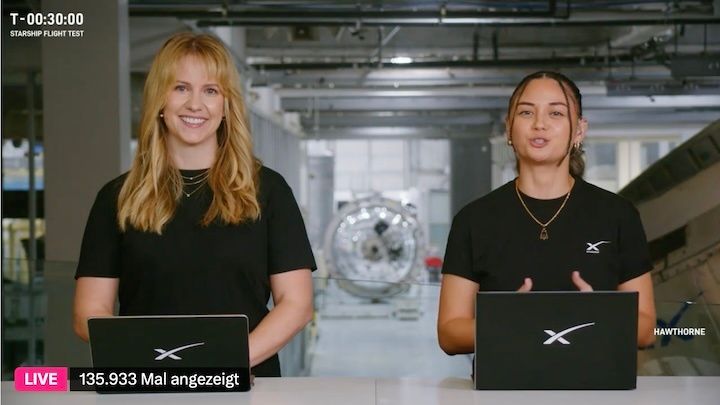
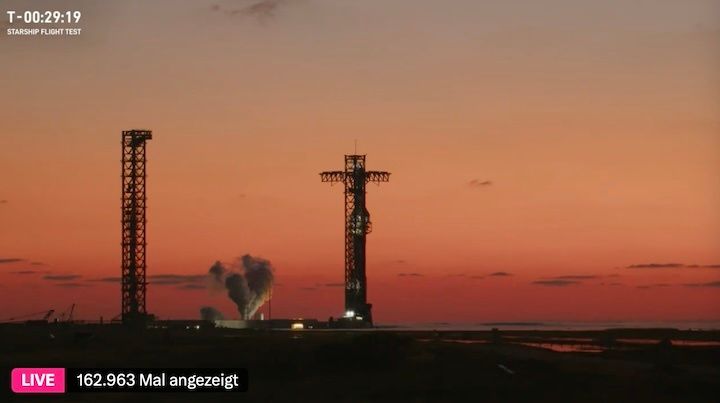
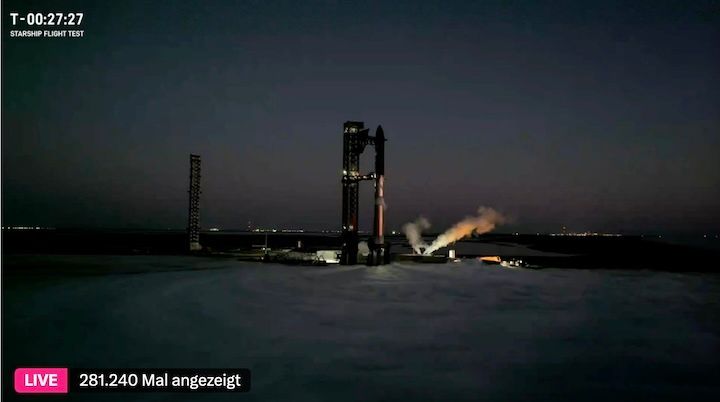
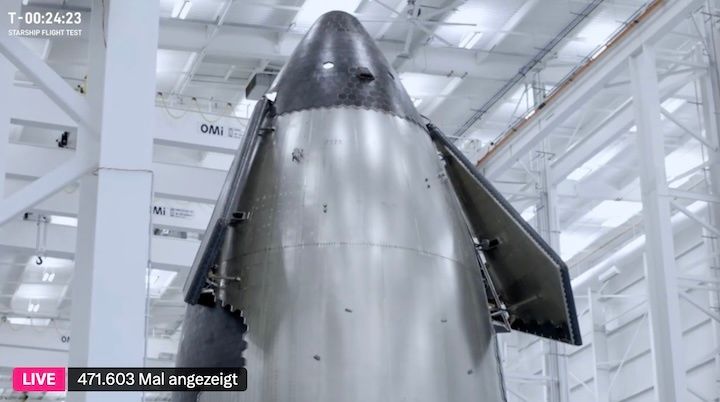
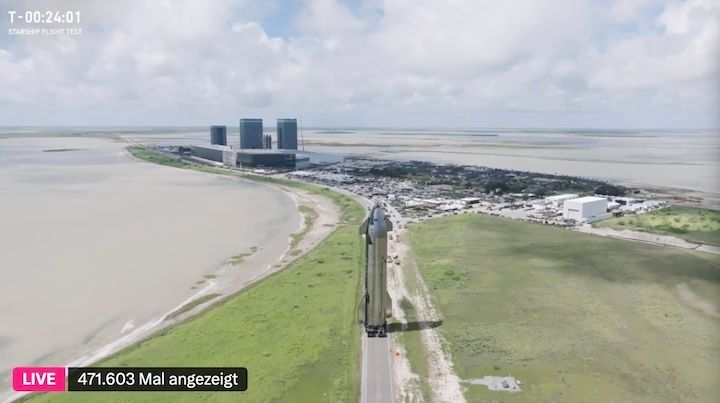

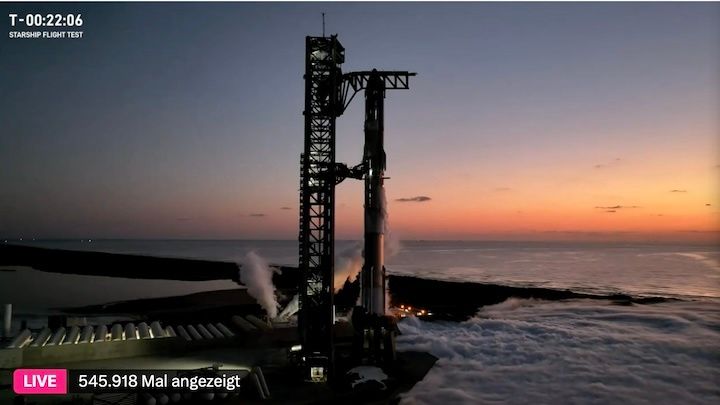
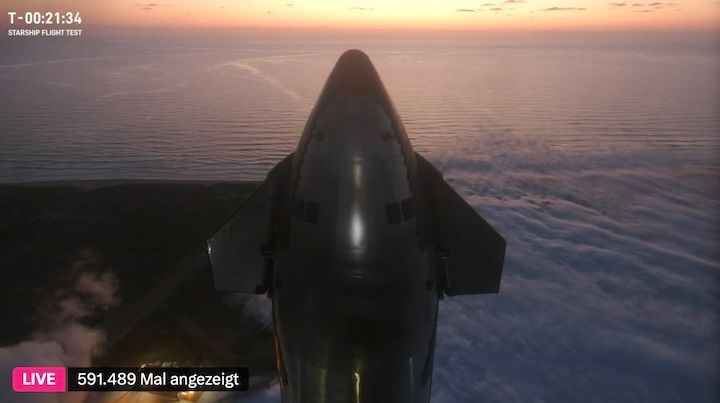
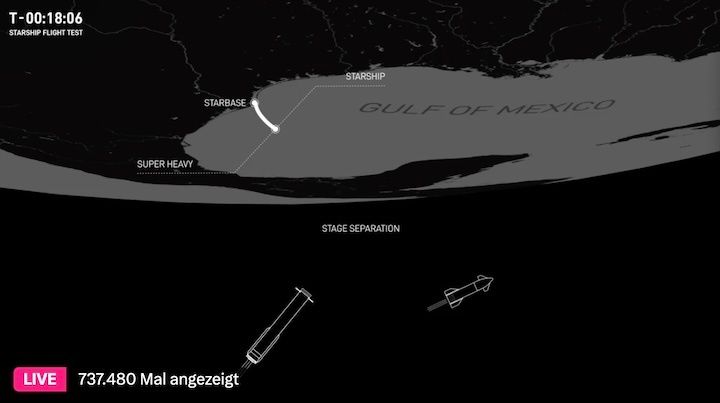
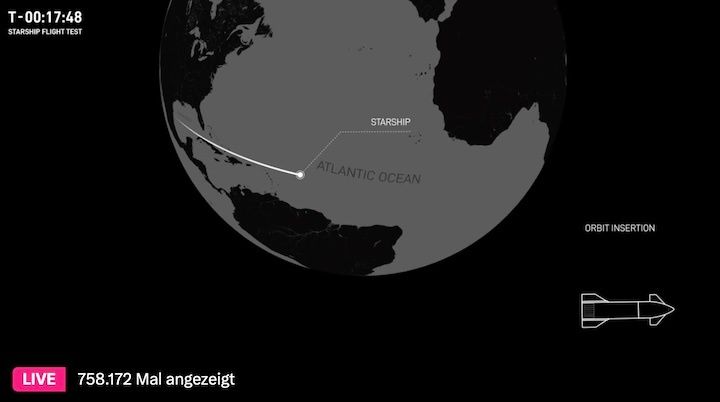
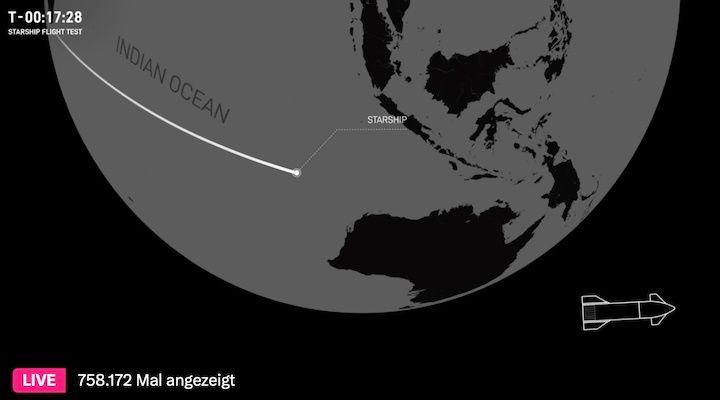
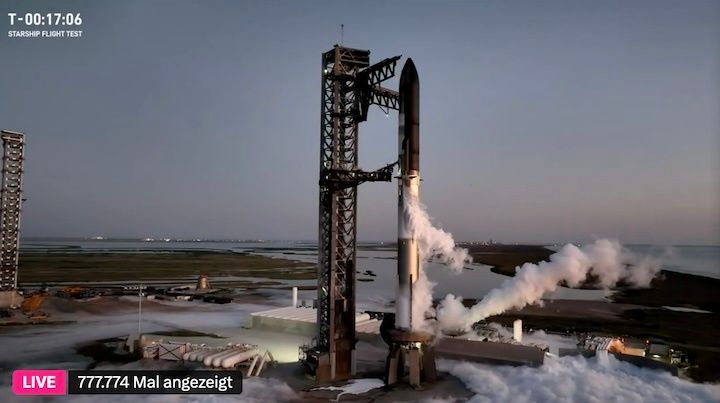
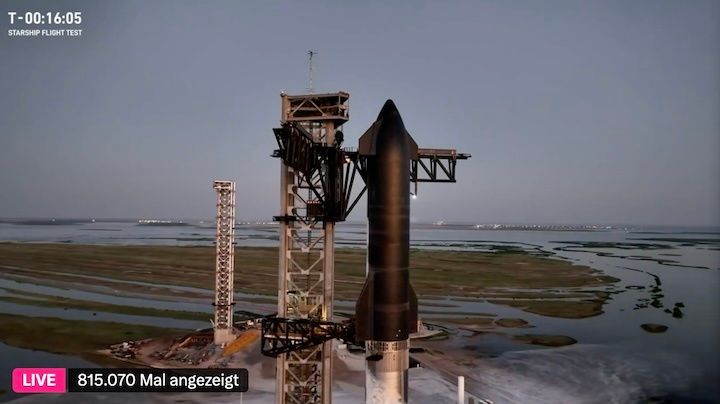

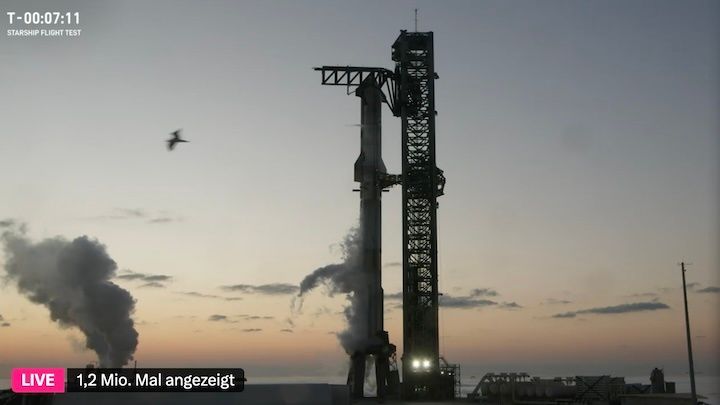

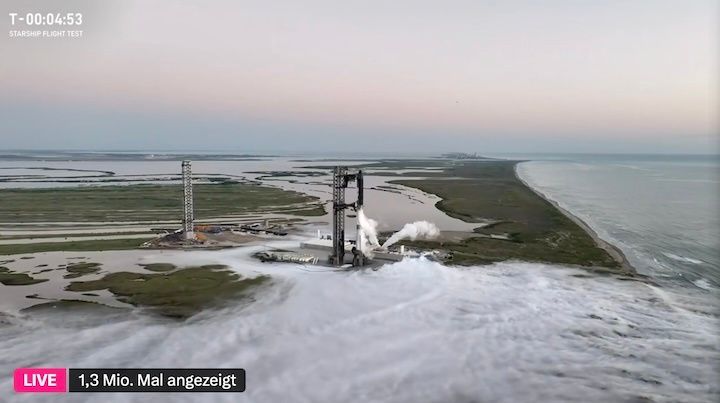


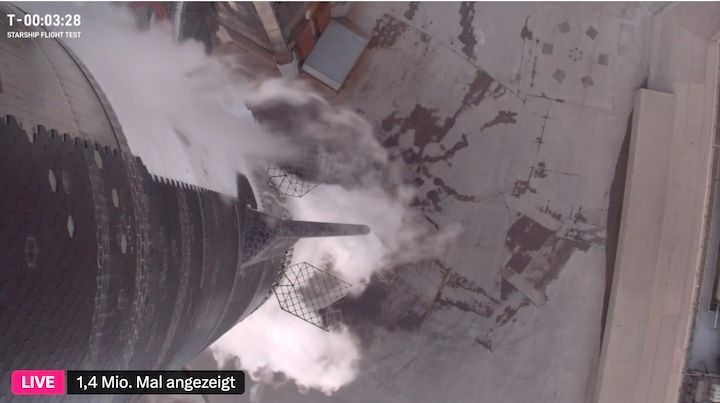
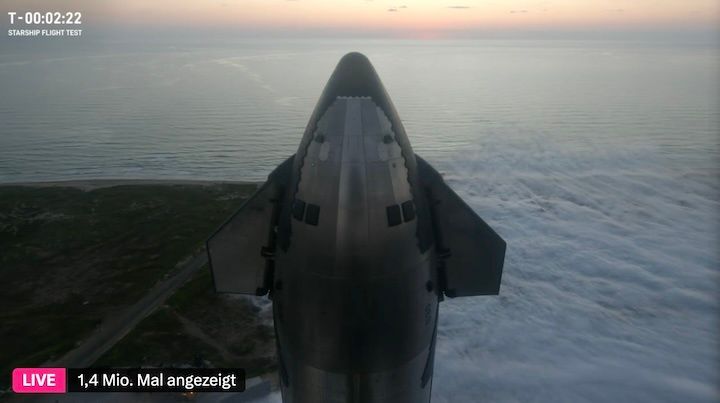
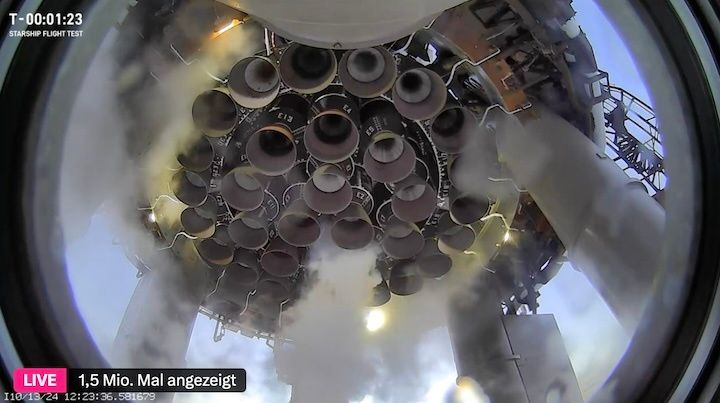
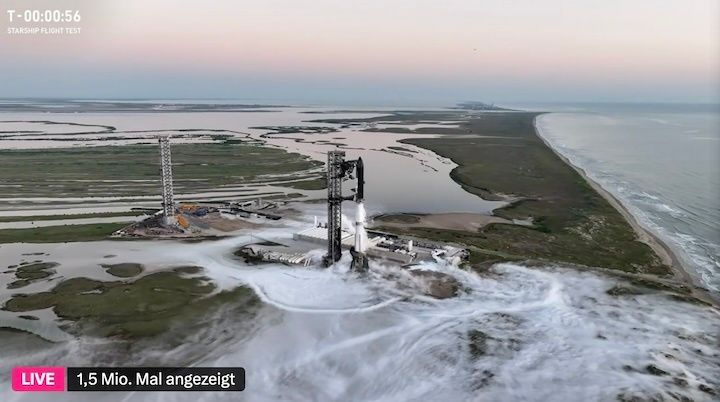

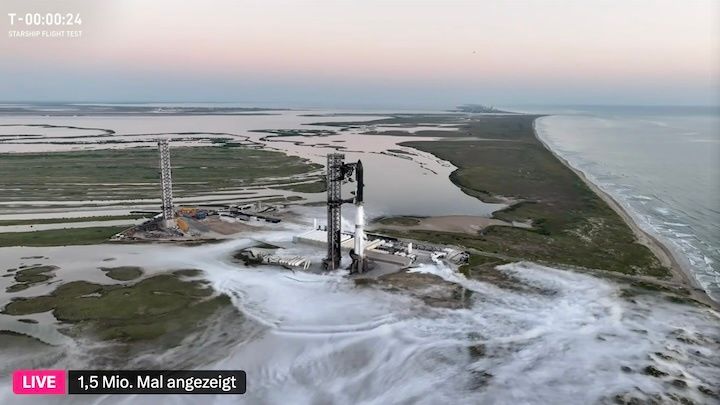
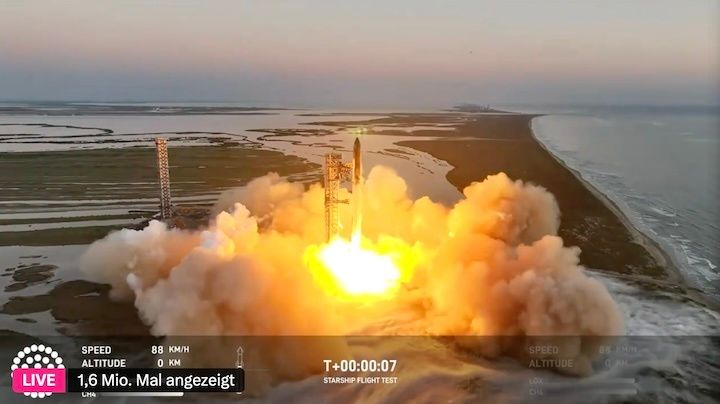


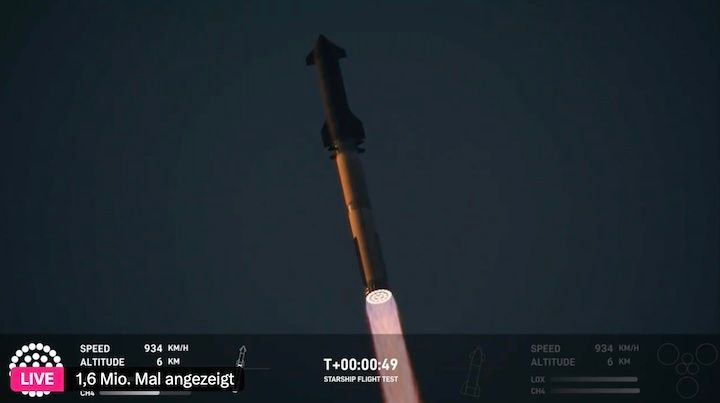
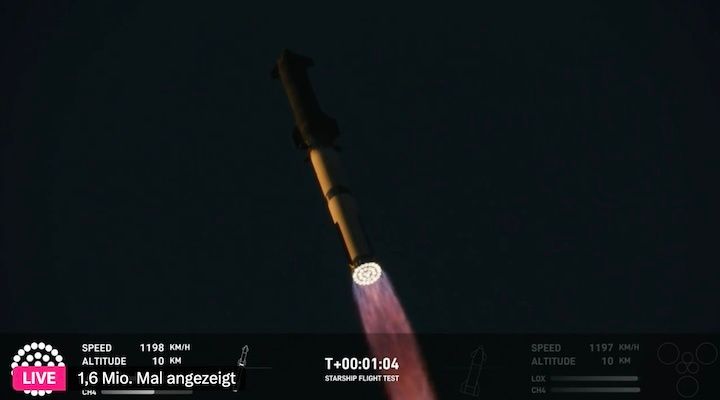
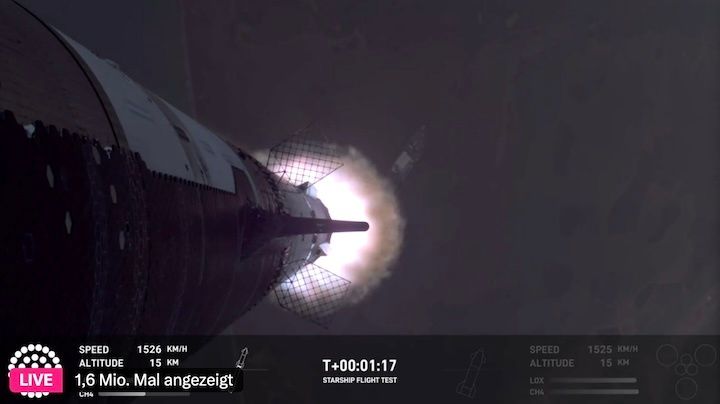
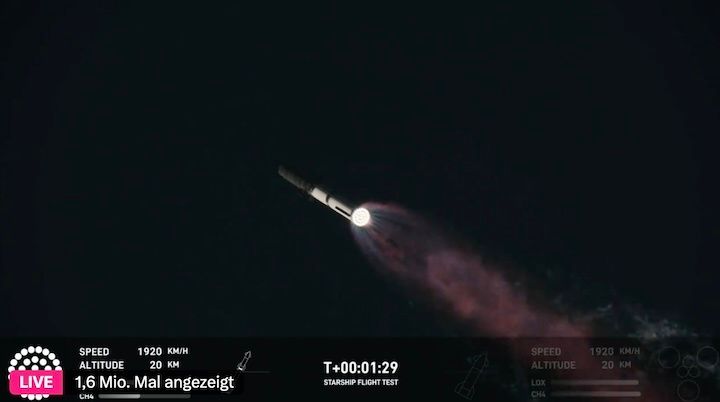
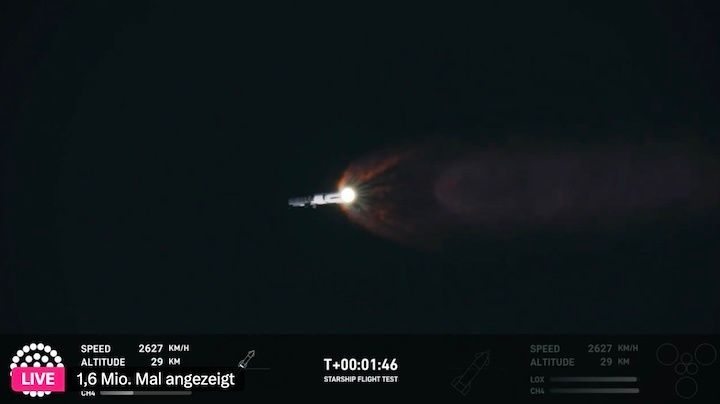

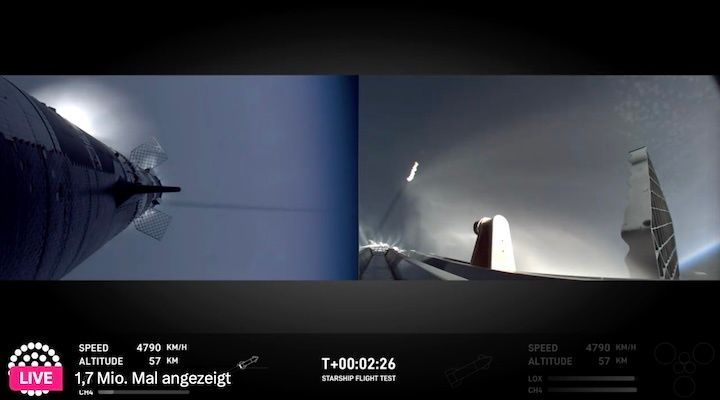
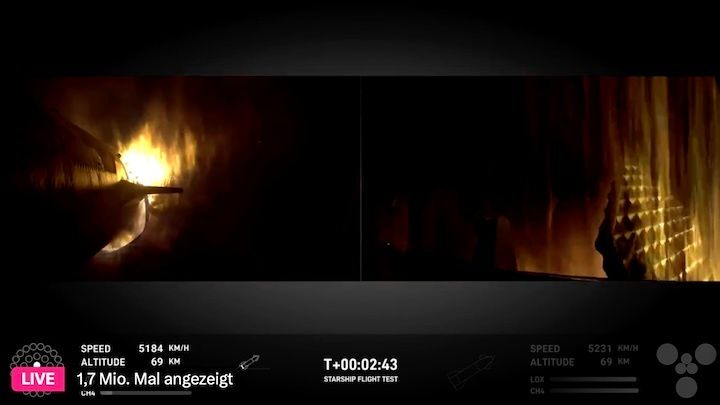
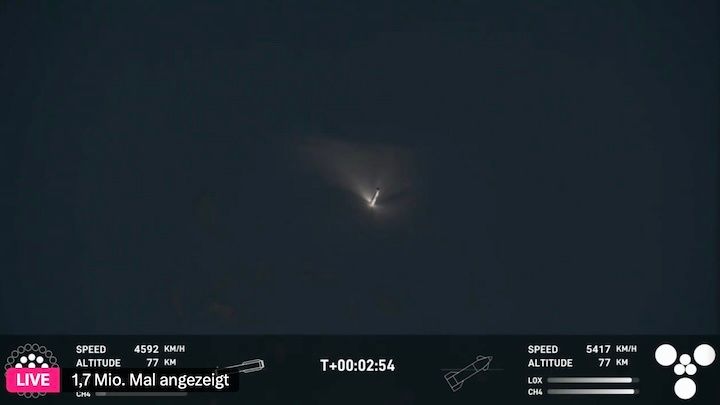
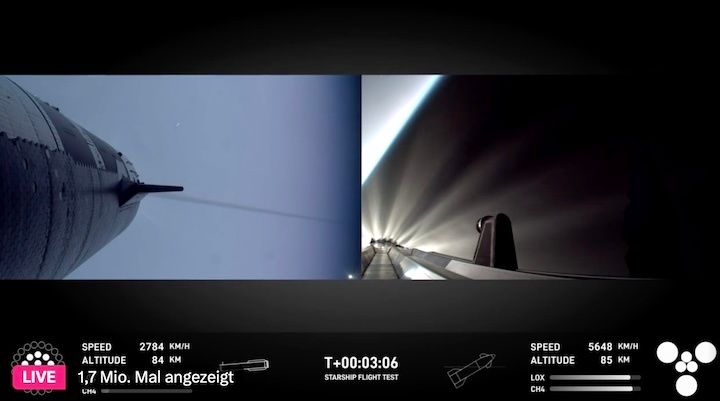
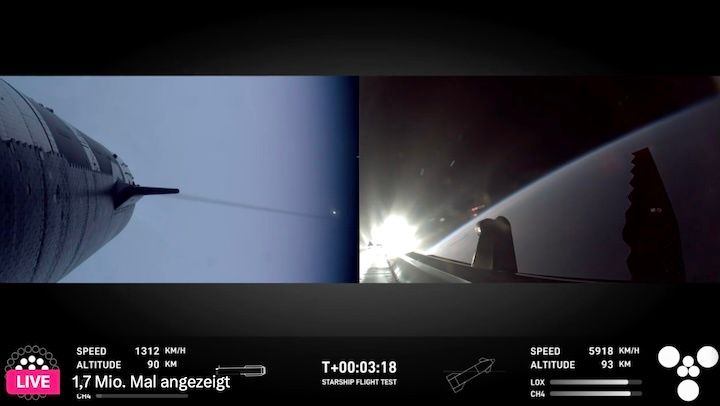
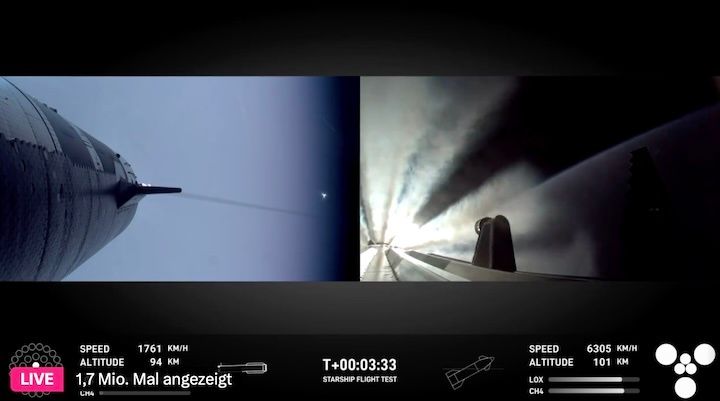
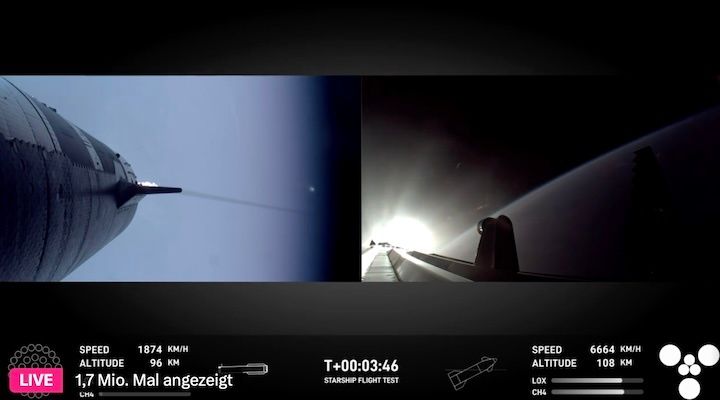
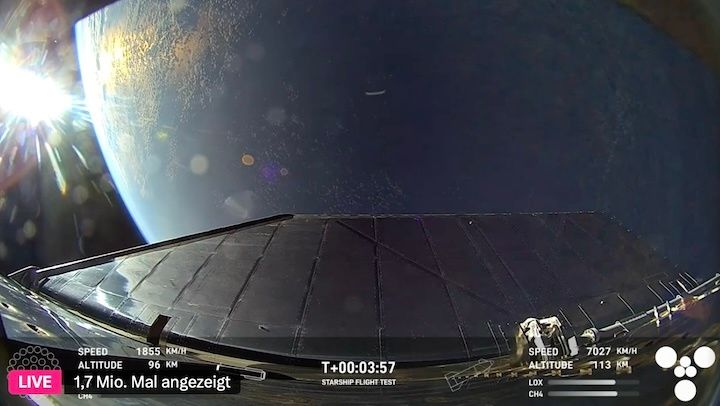

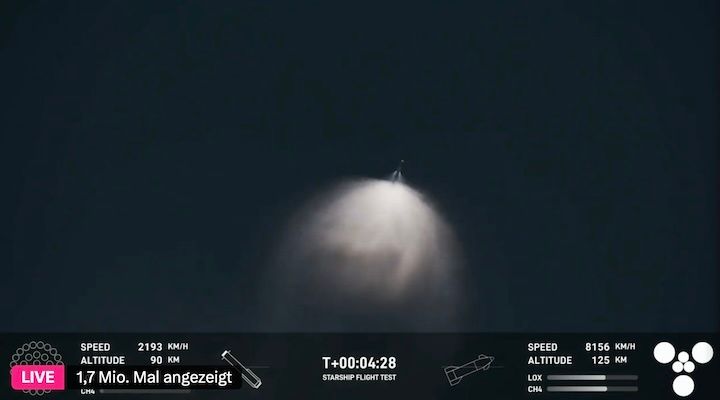
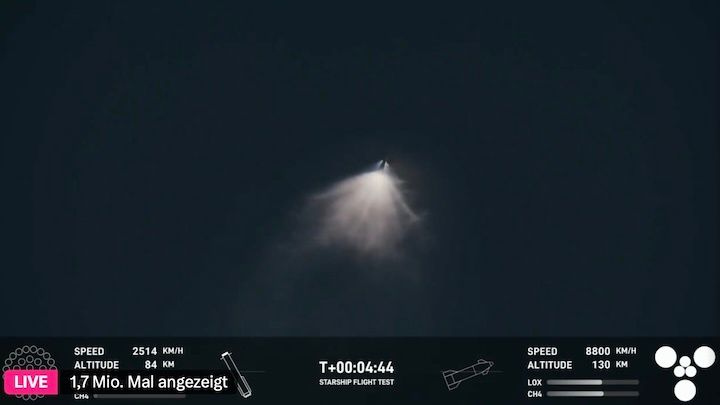
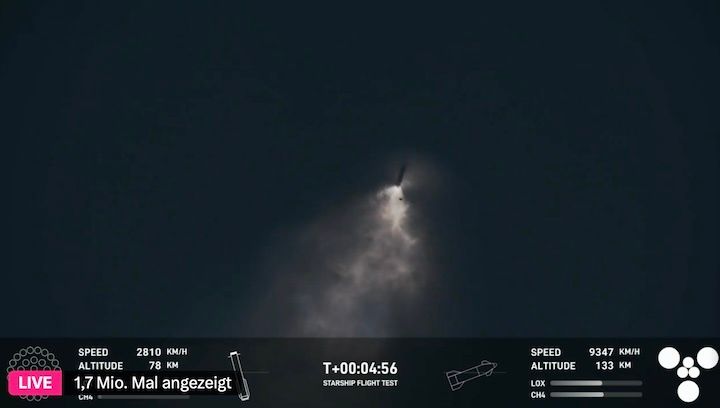

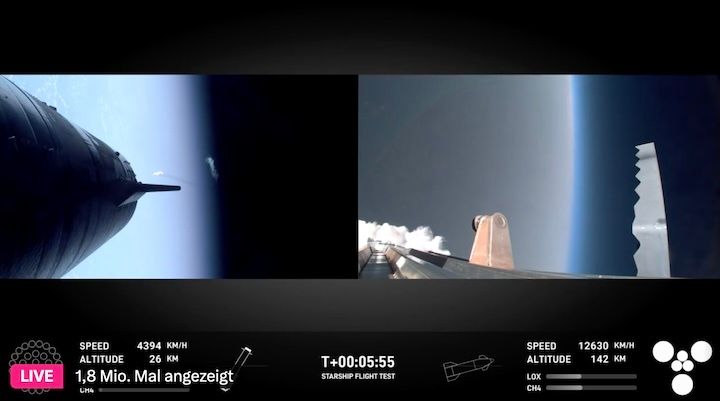


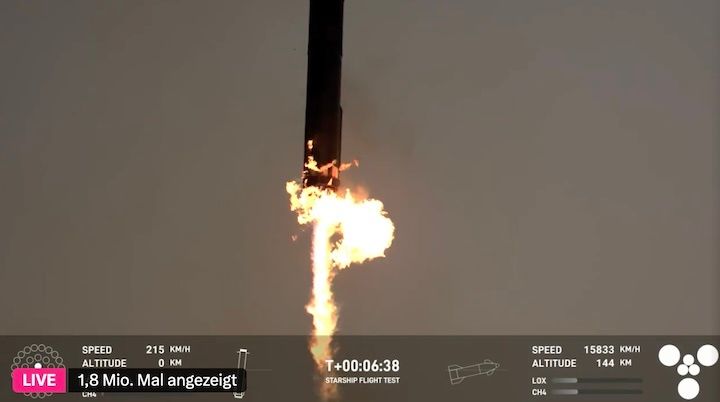
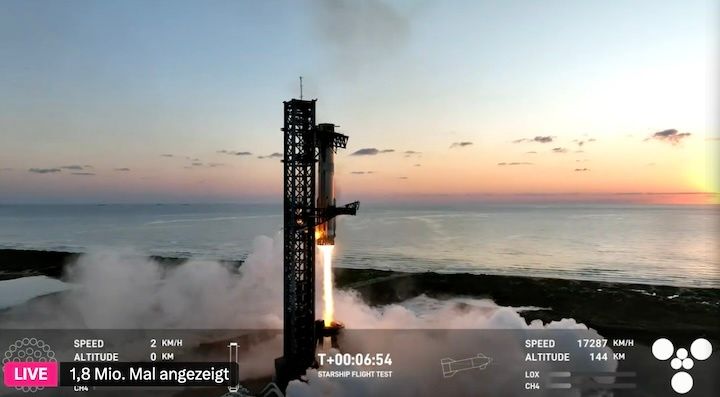
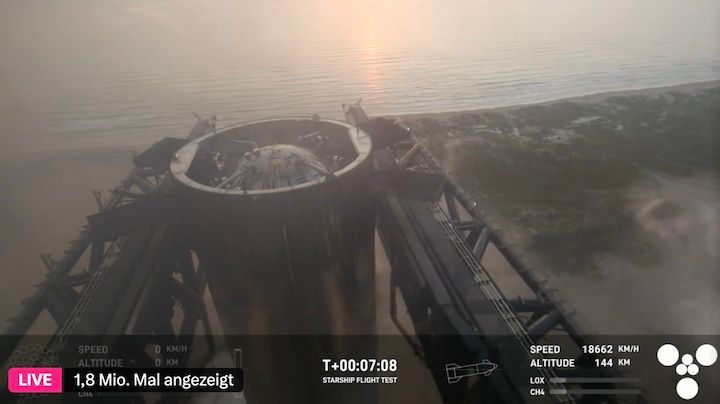
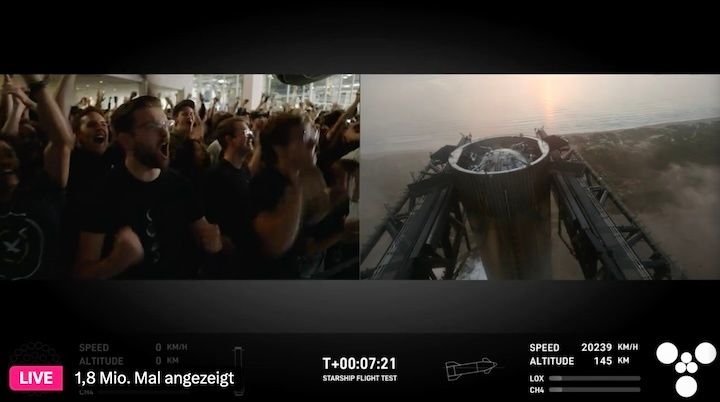
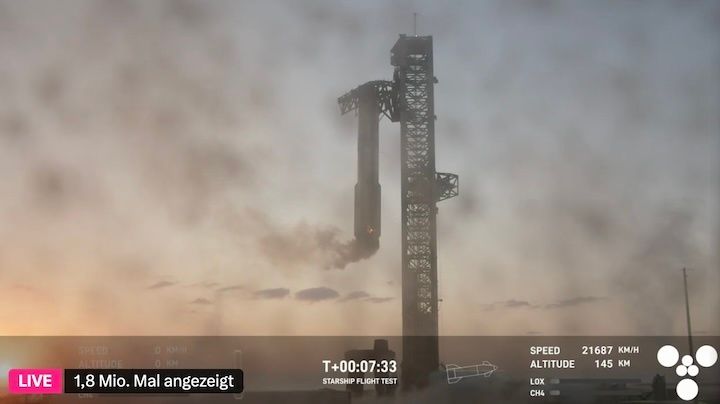
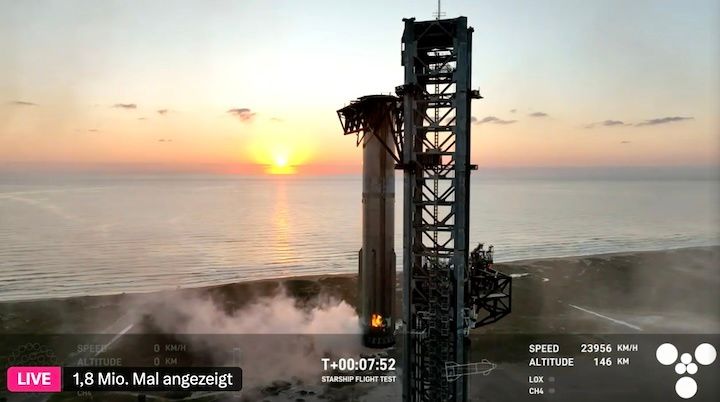
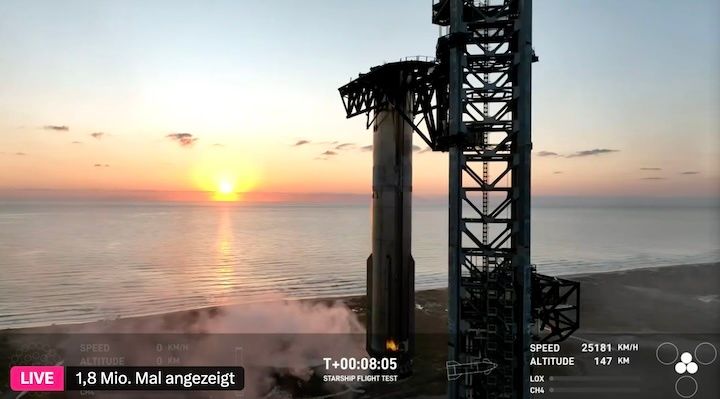



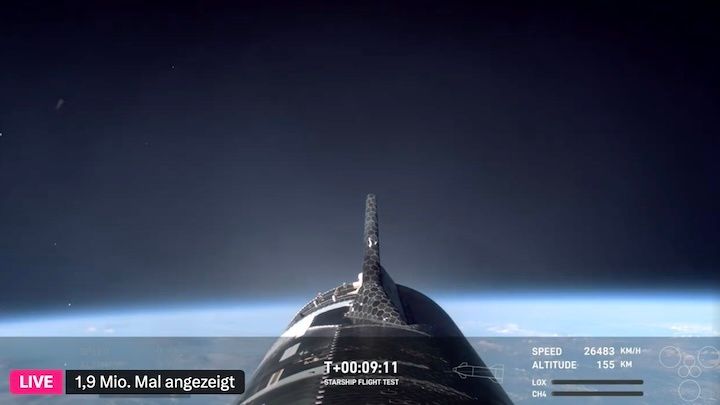
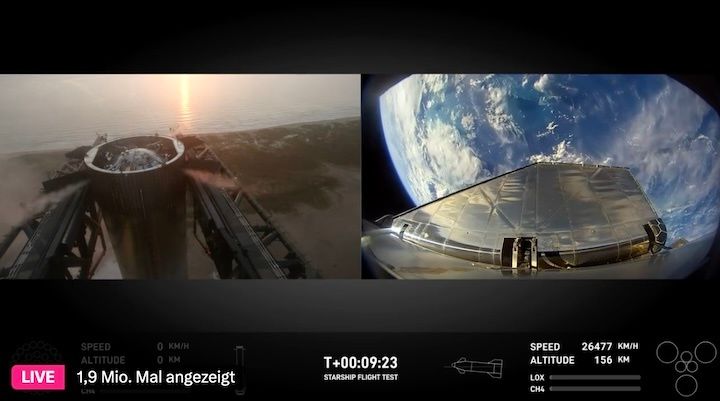

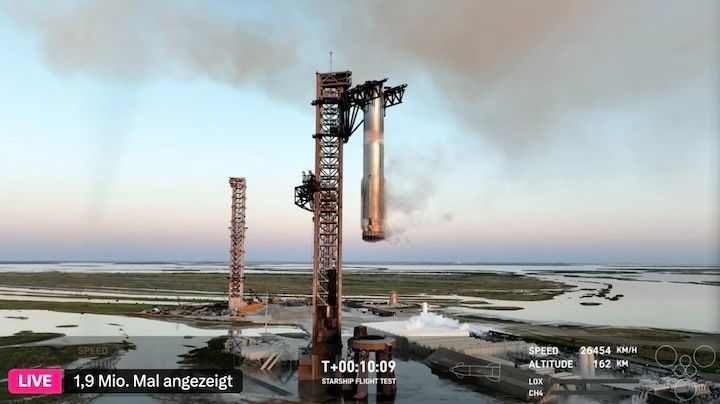
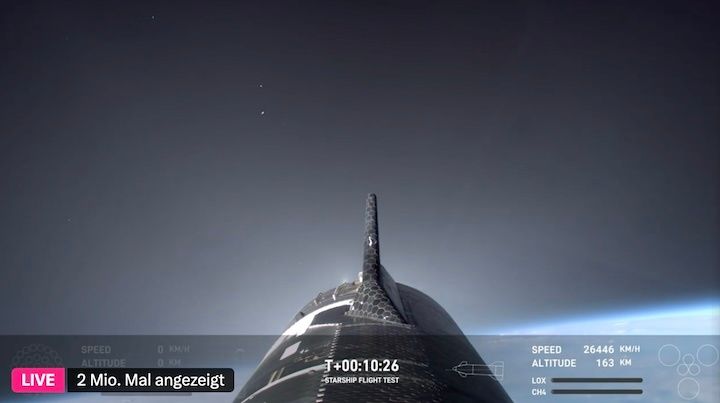
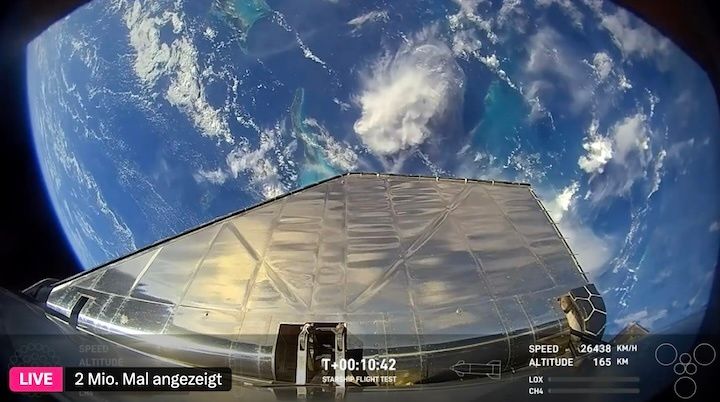
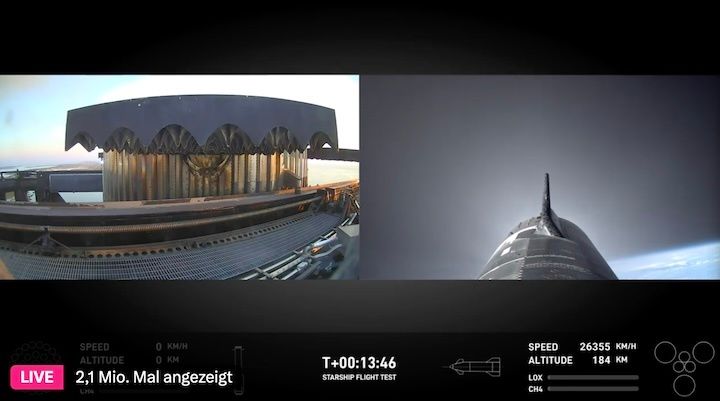
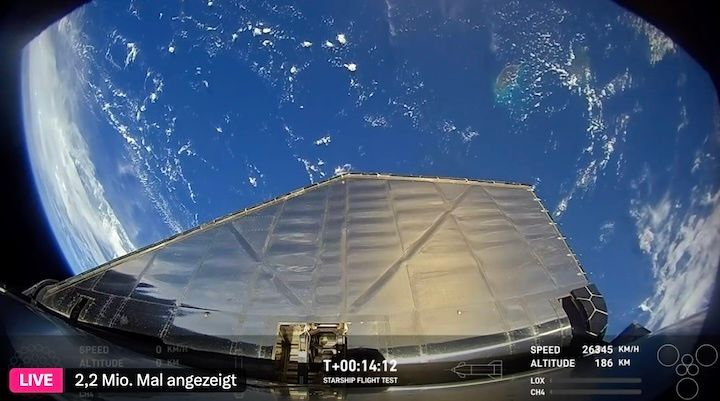
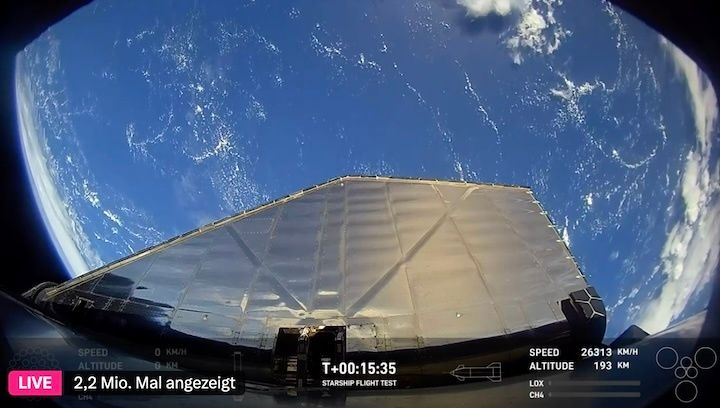

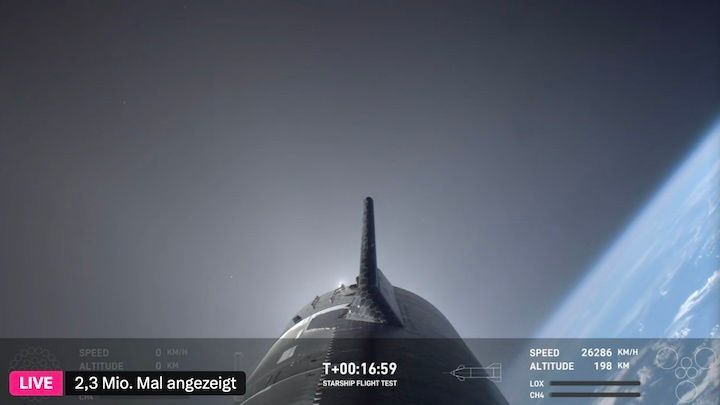
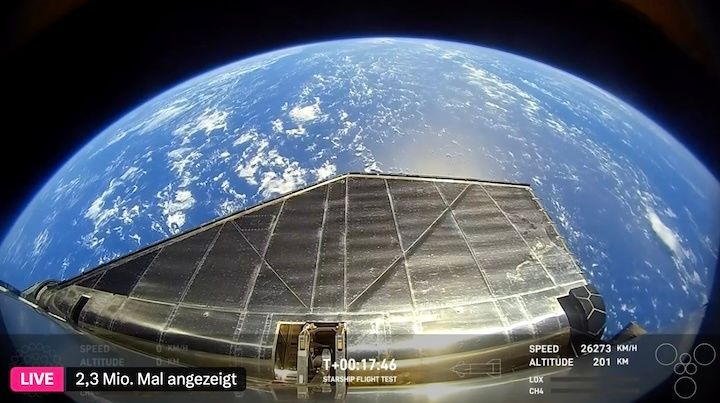
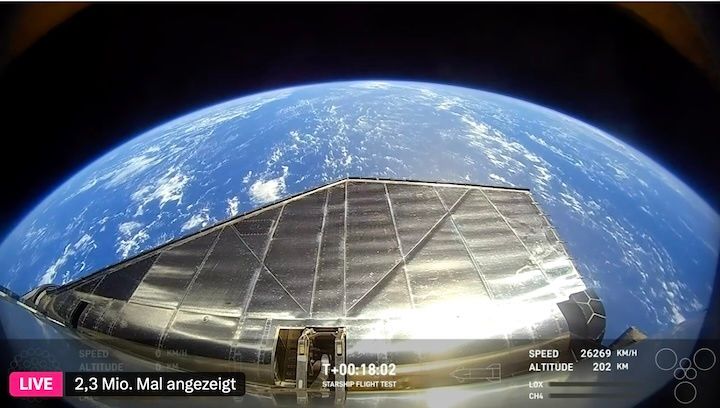


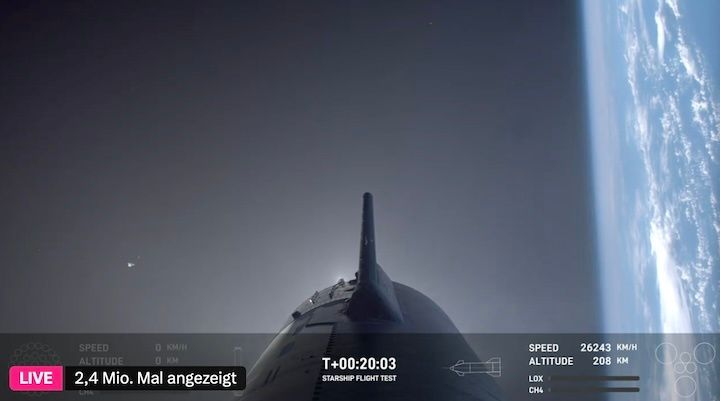
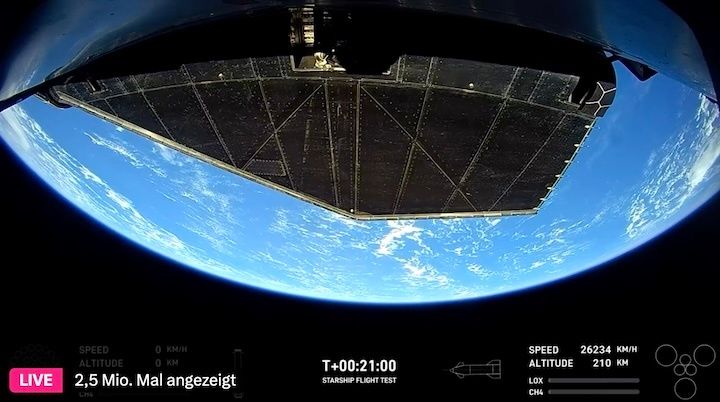
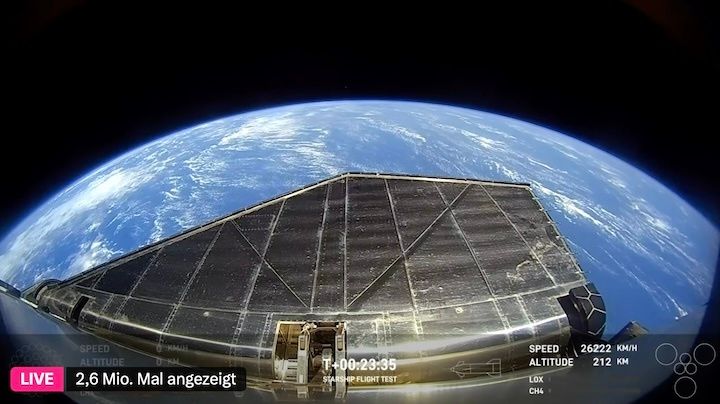
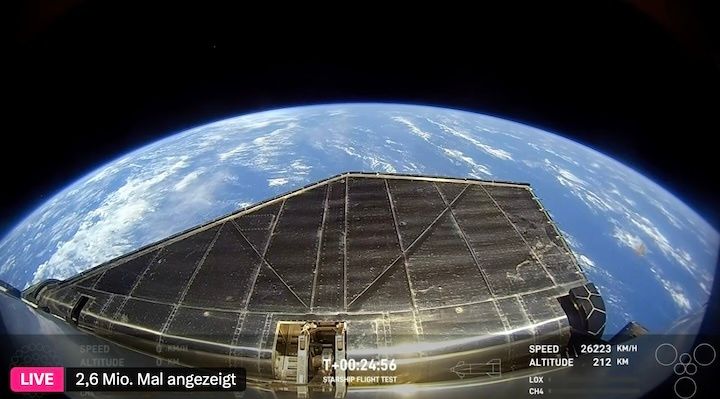

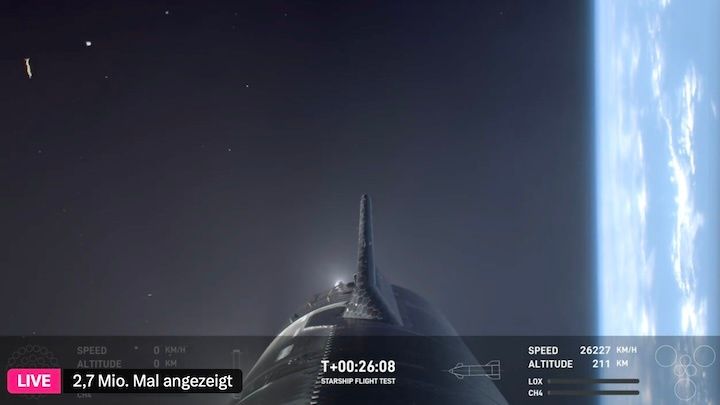

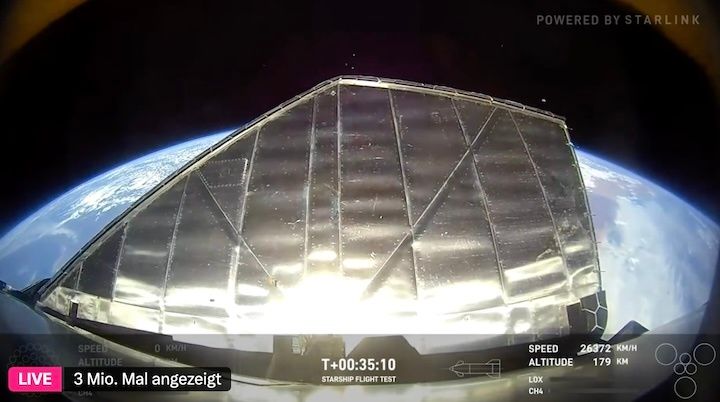
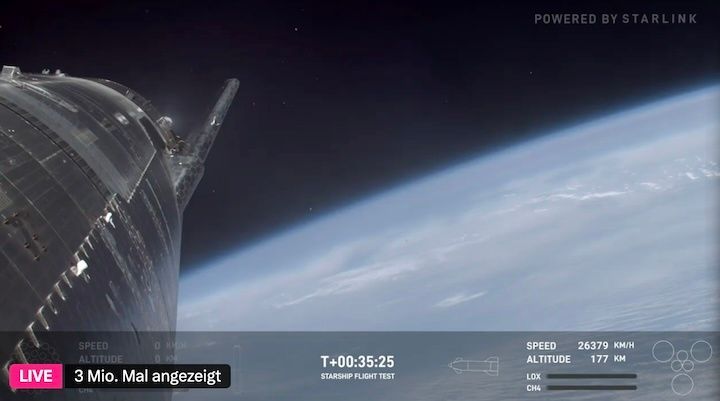
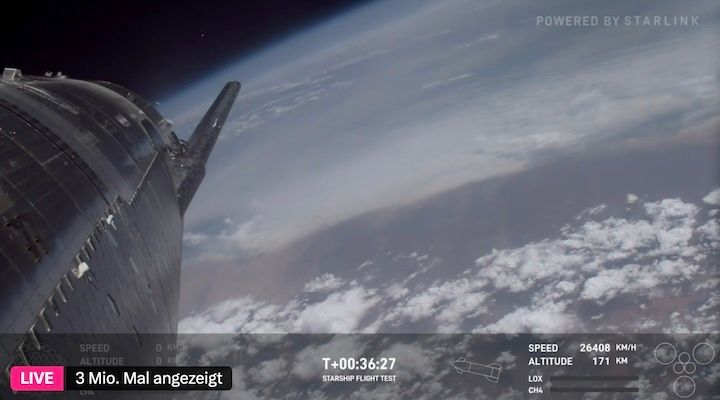
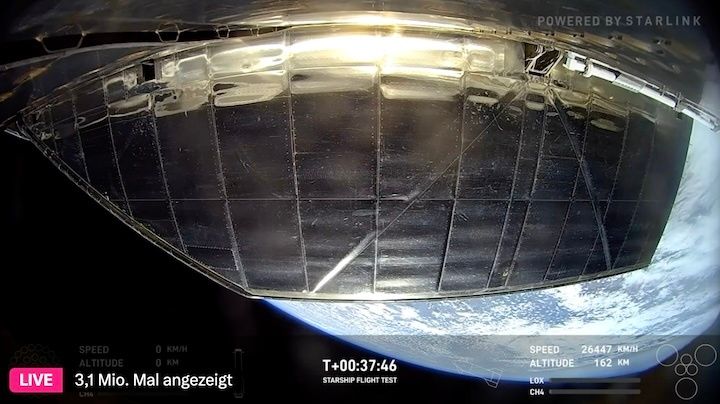

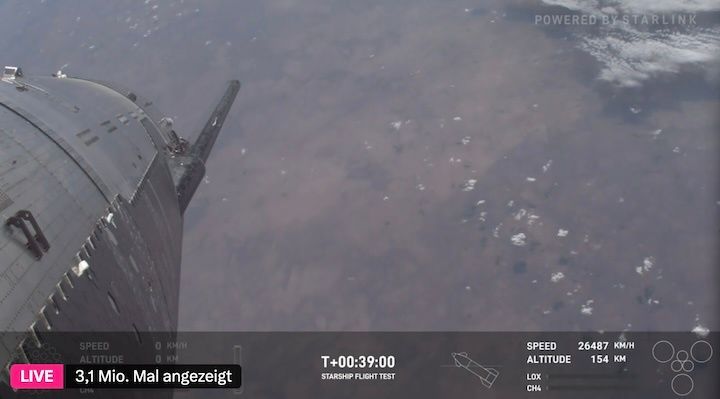
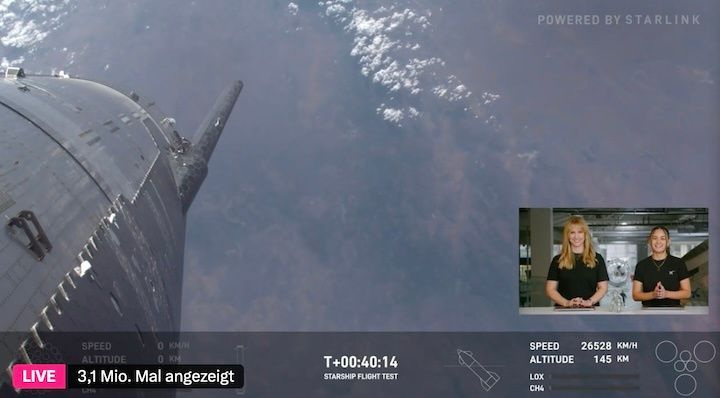
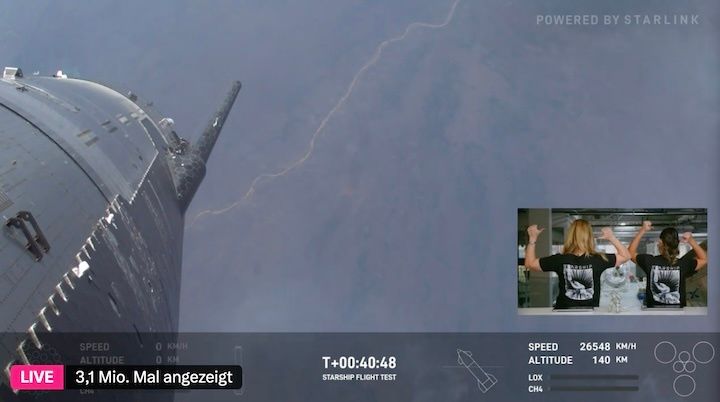

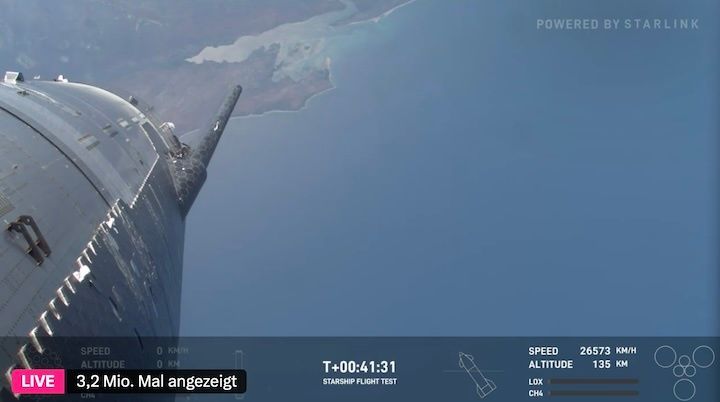
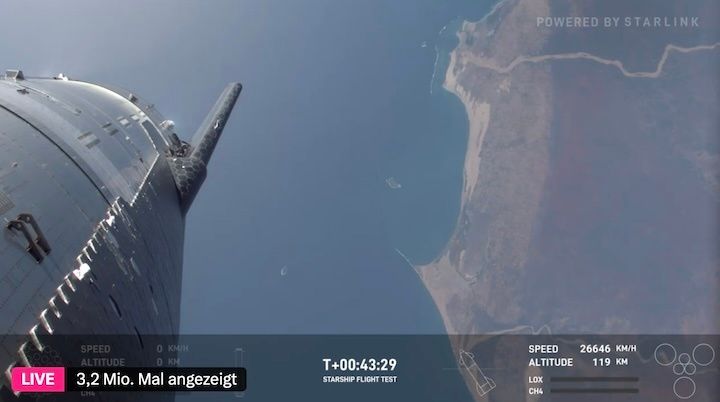
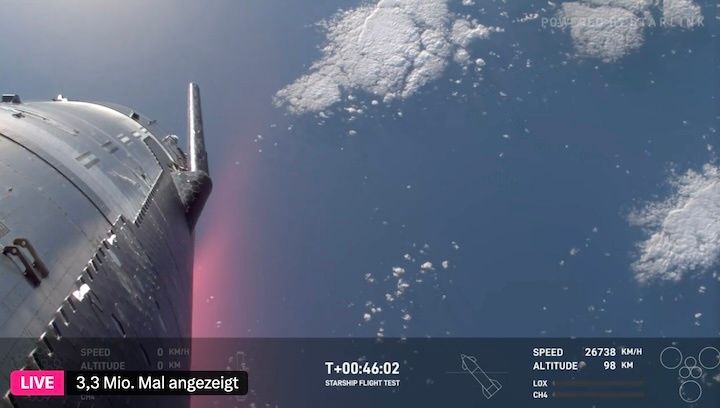

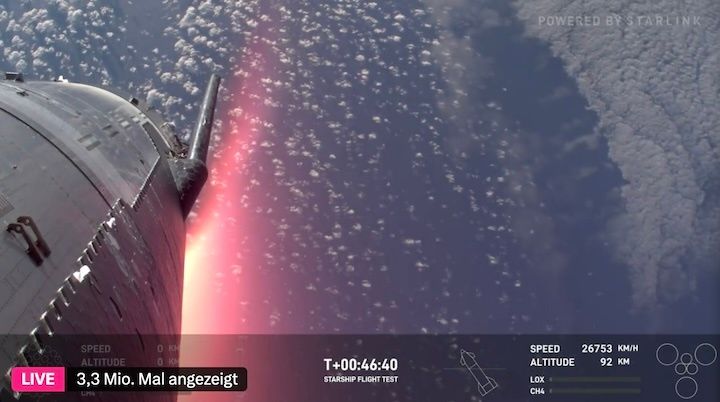
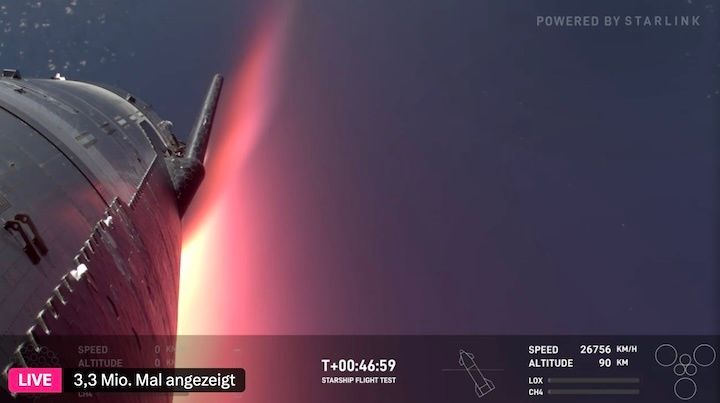
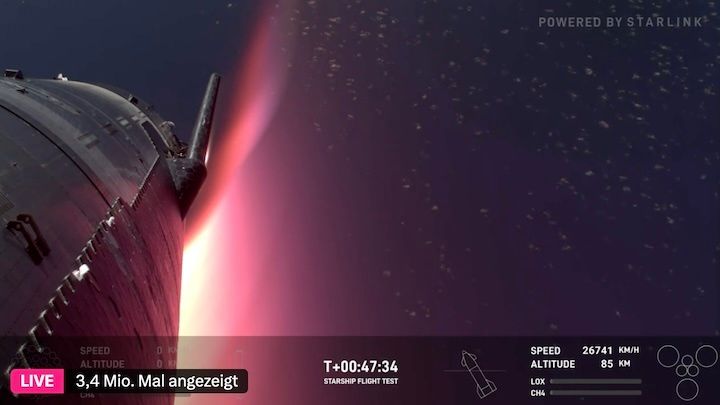

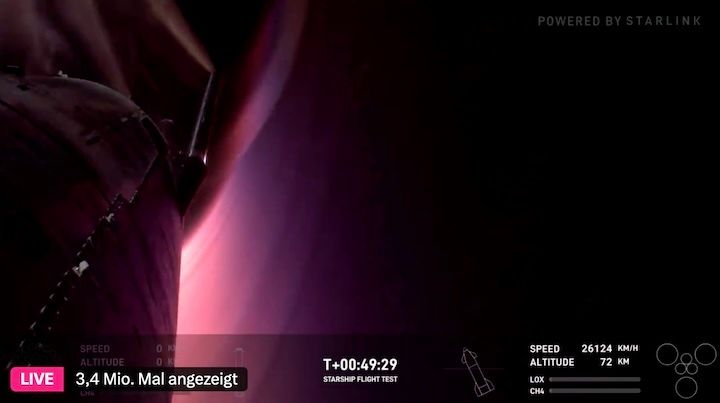
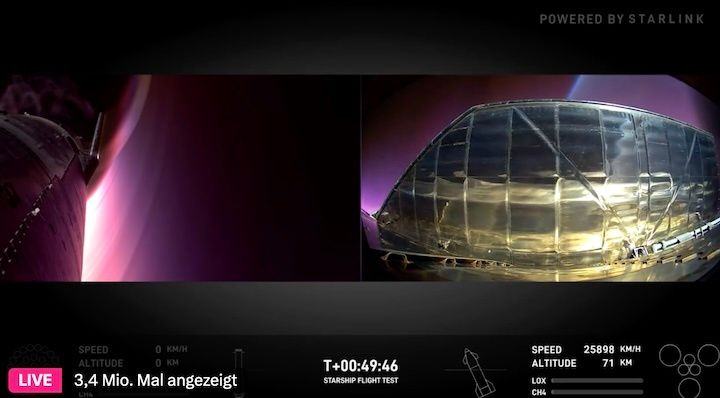
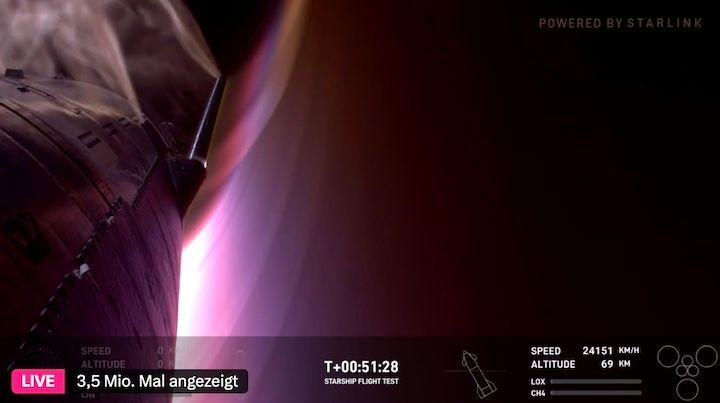
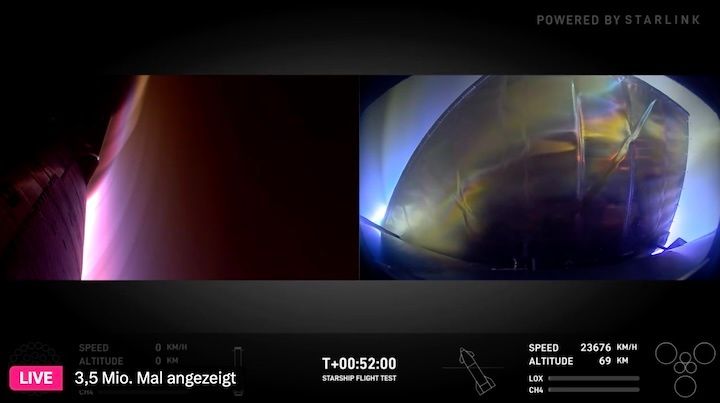

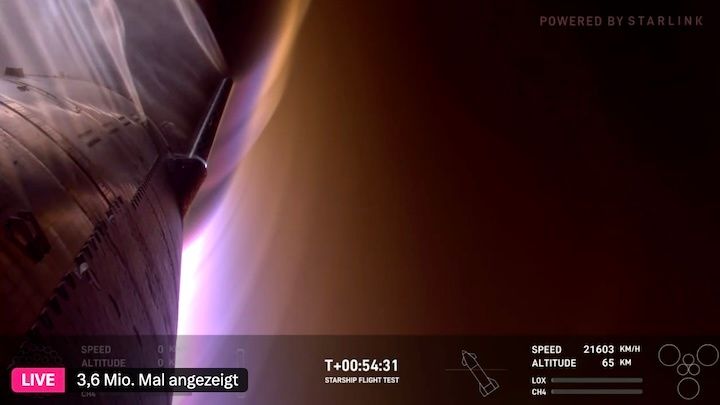
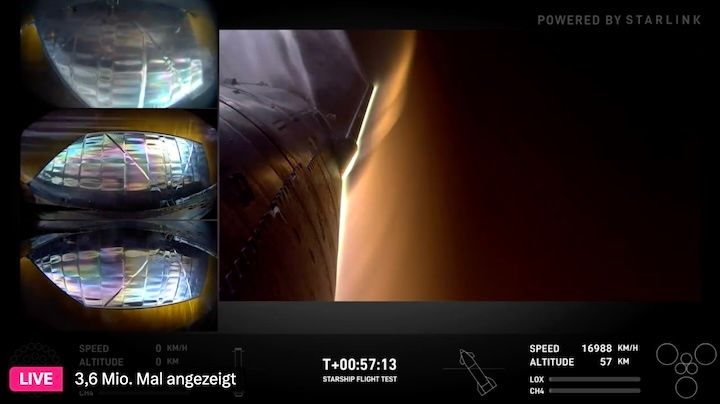
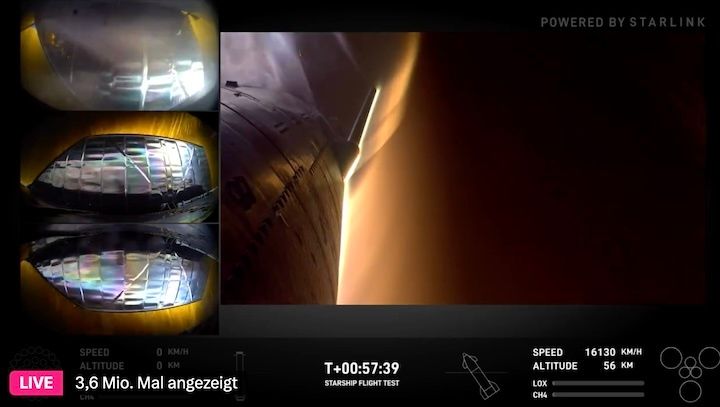

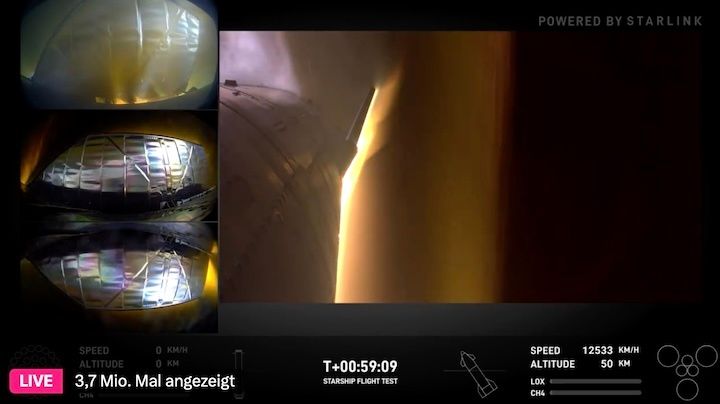
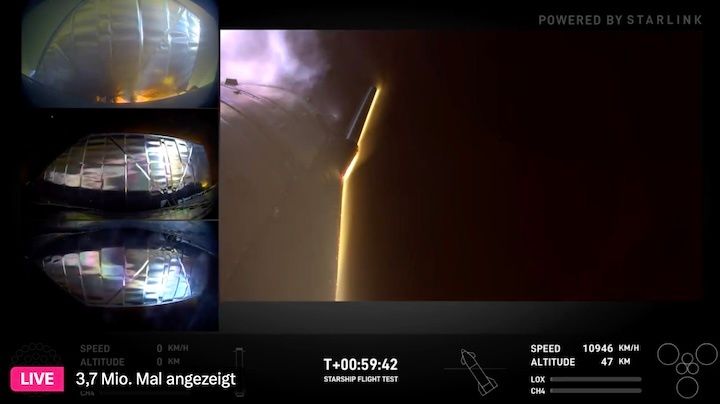




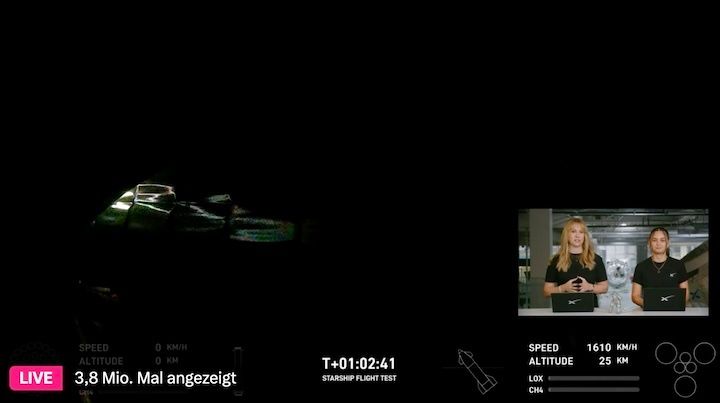
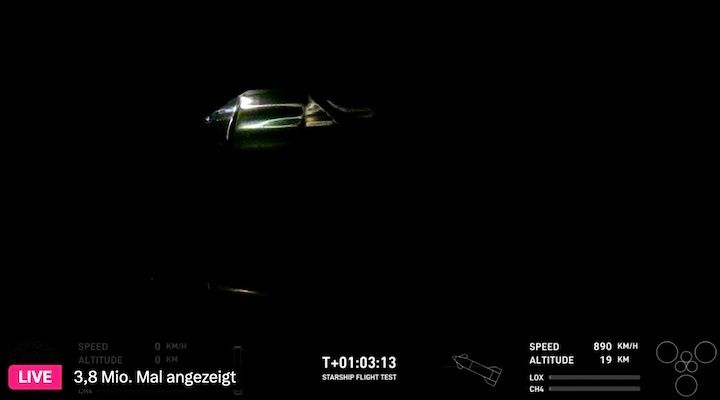
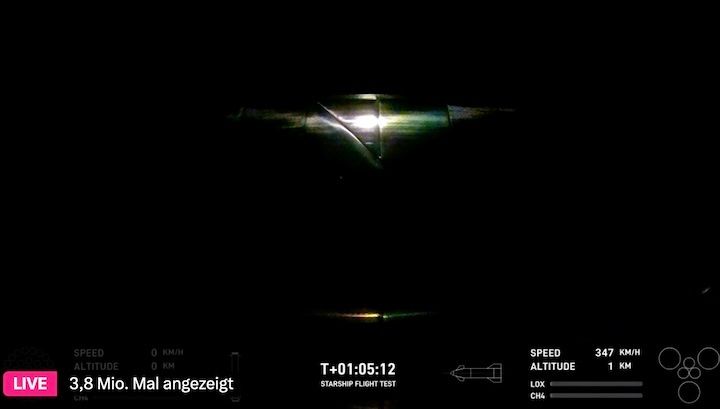
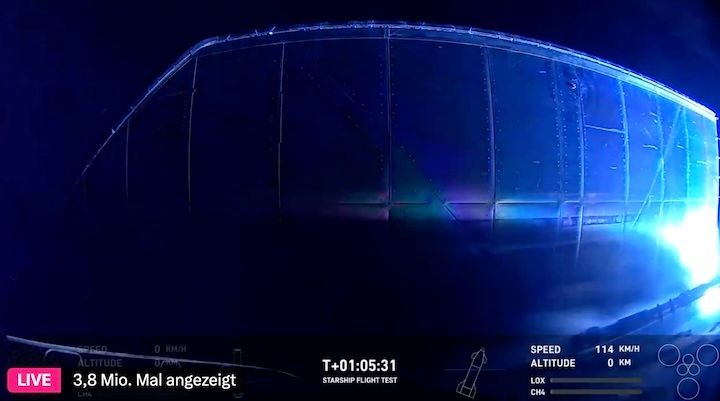
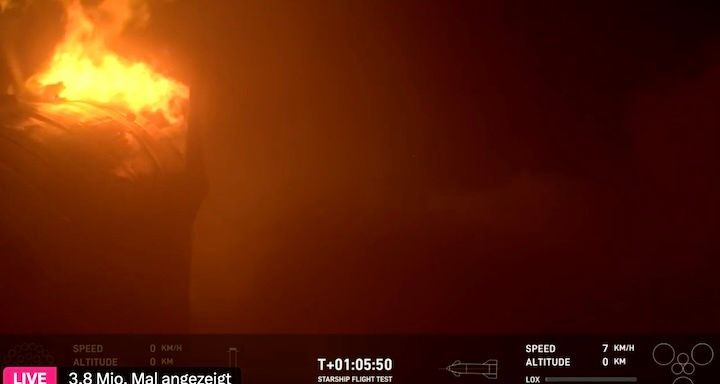
Quelle: SpaceX
